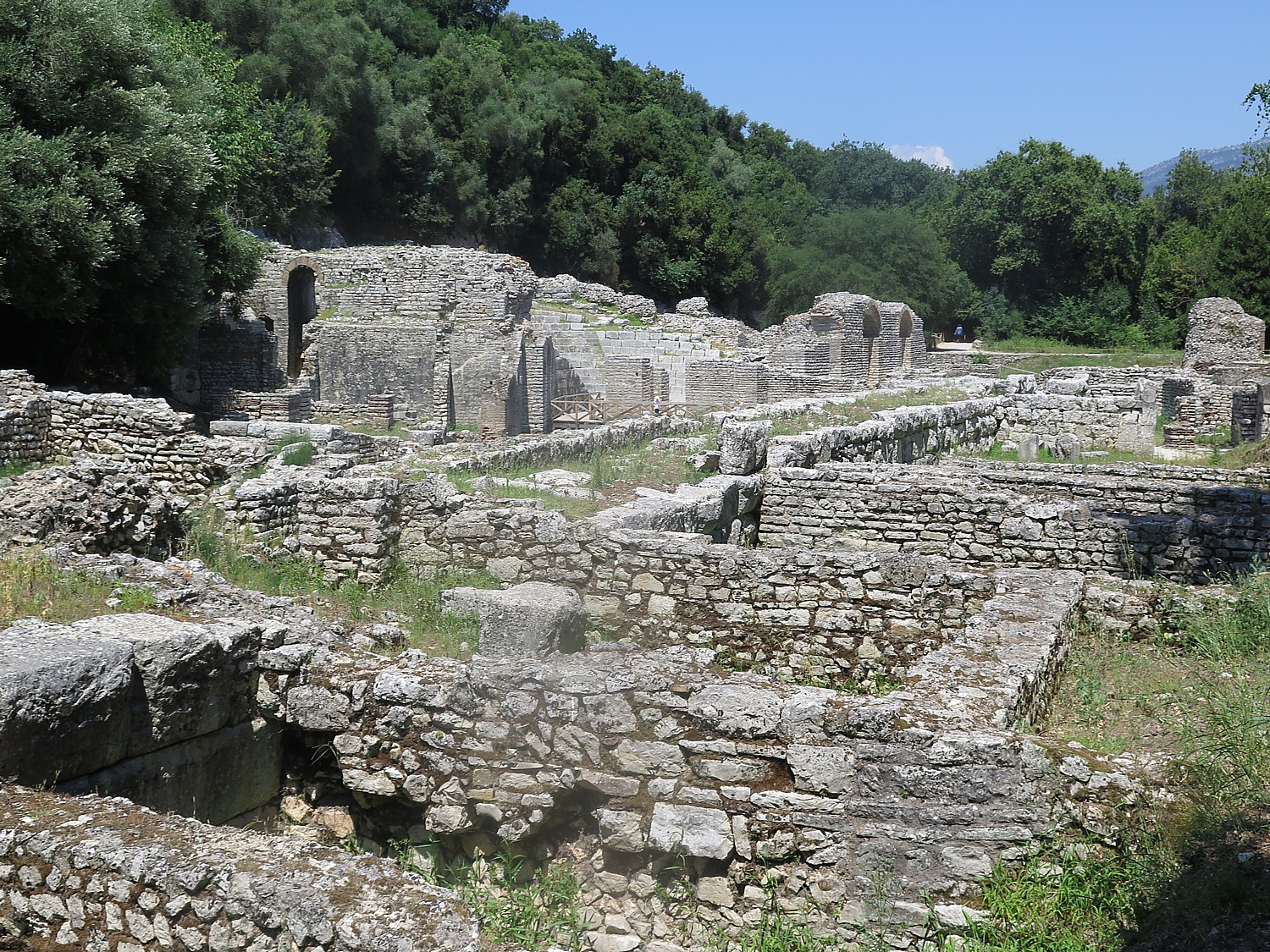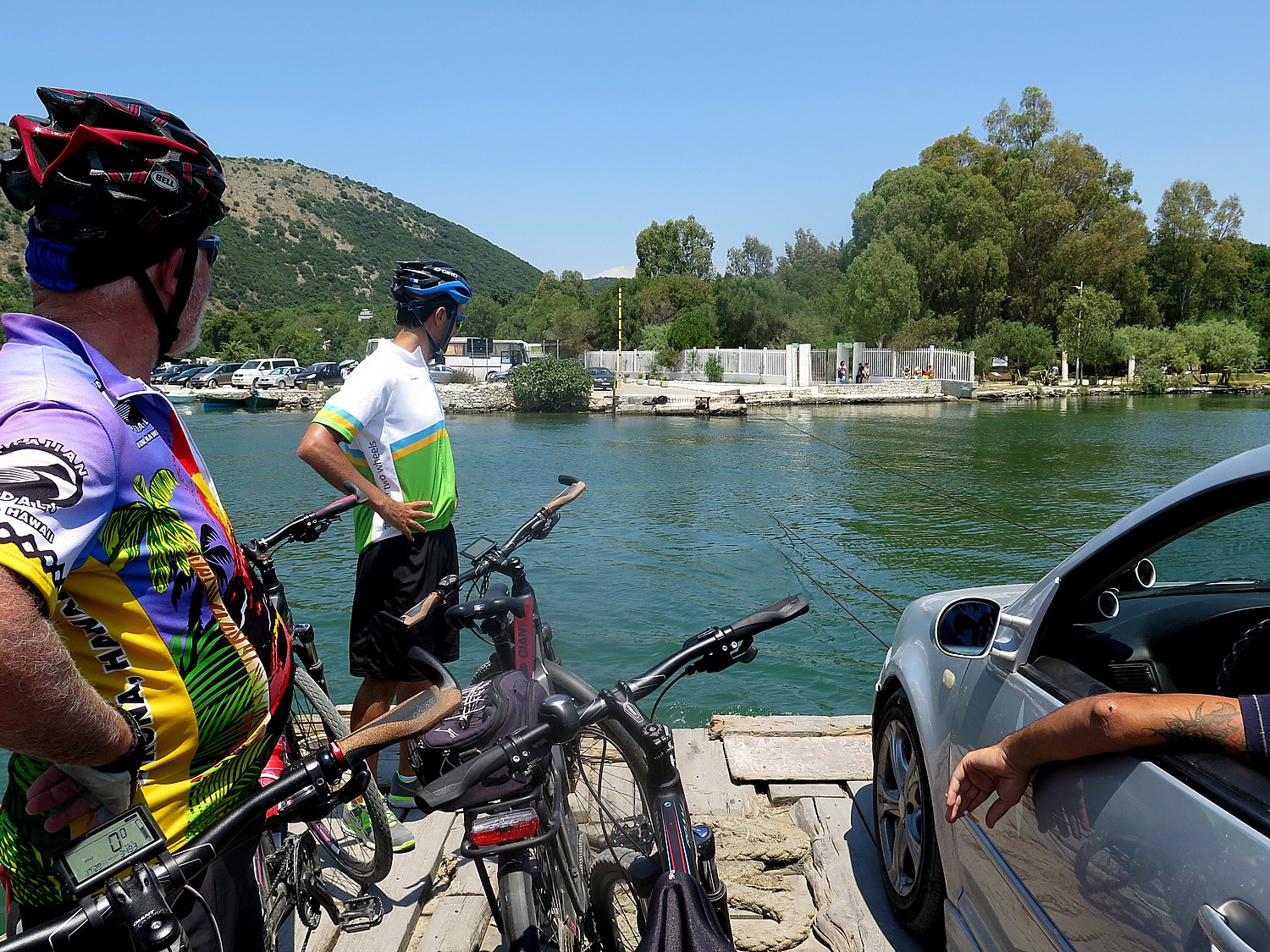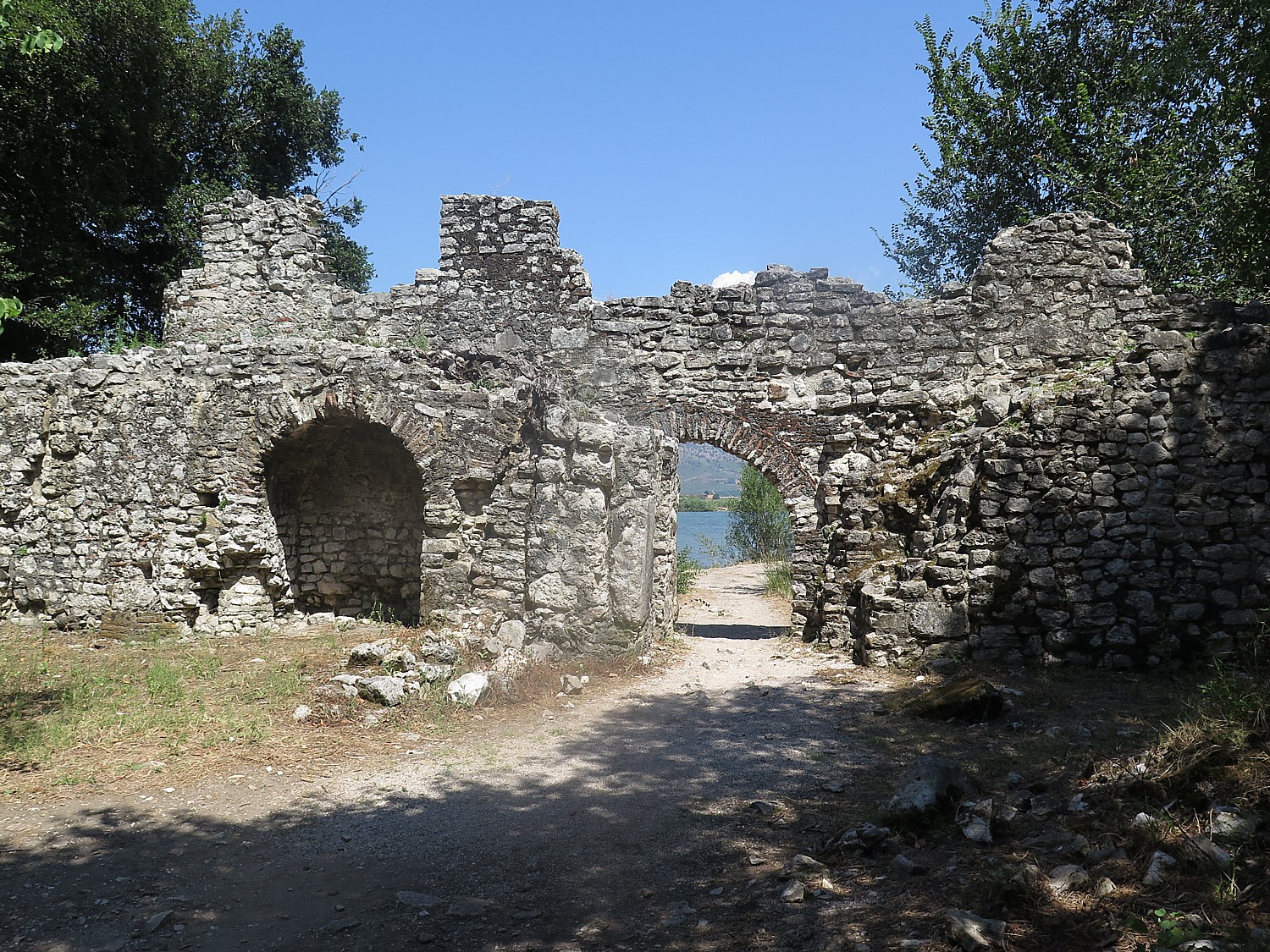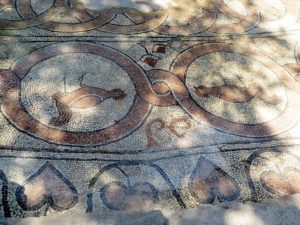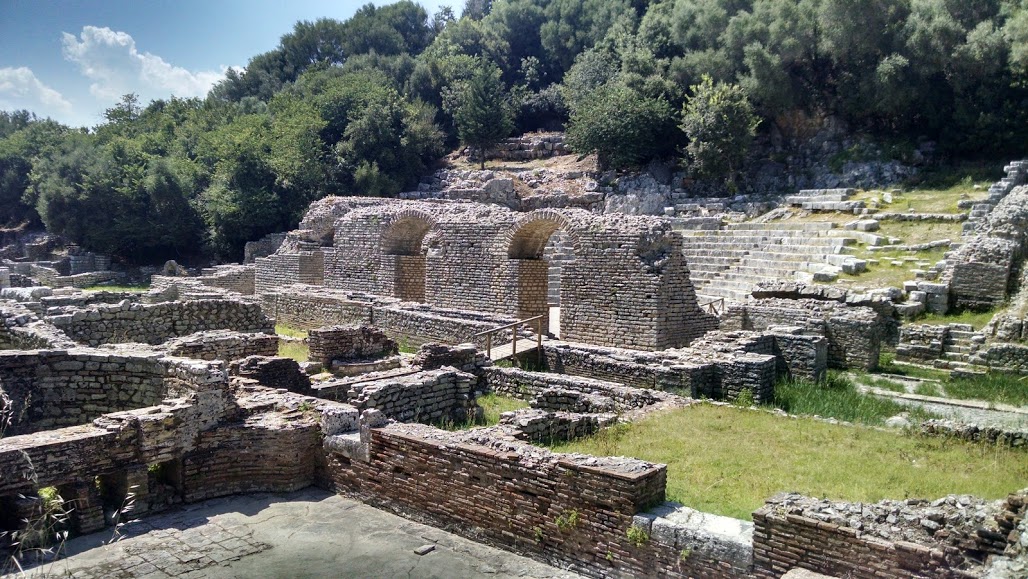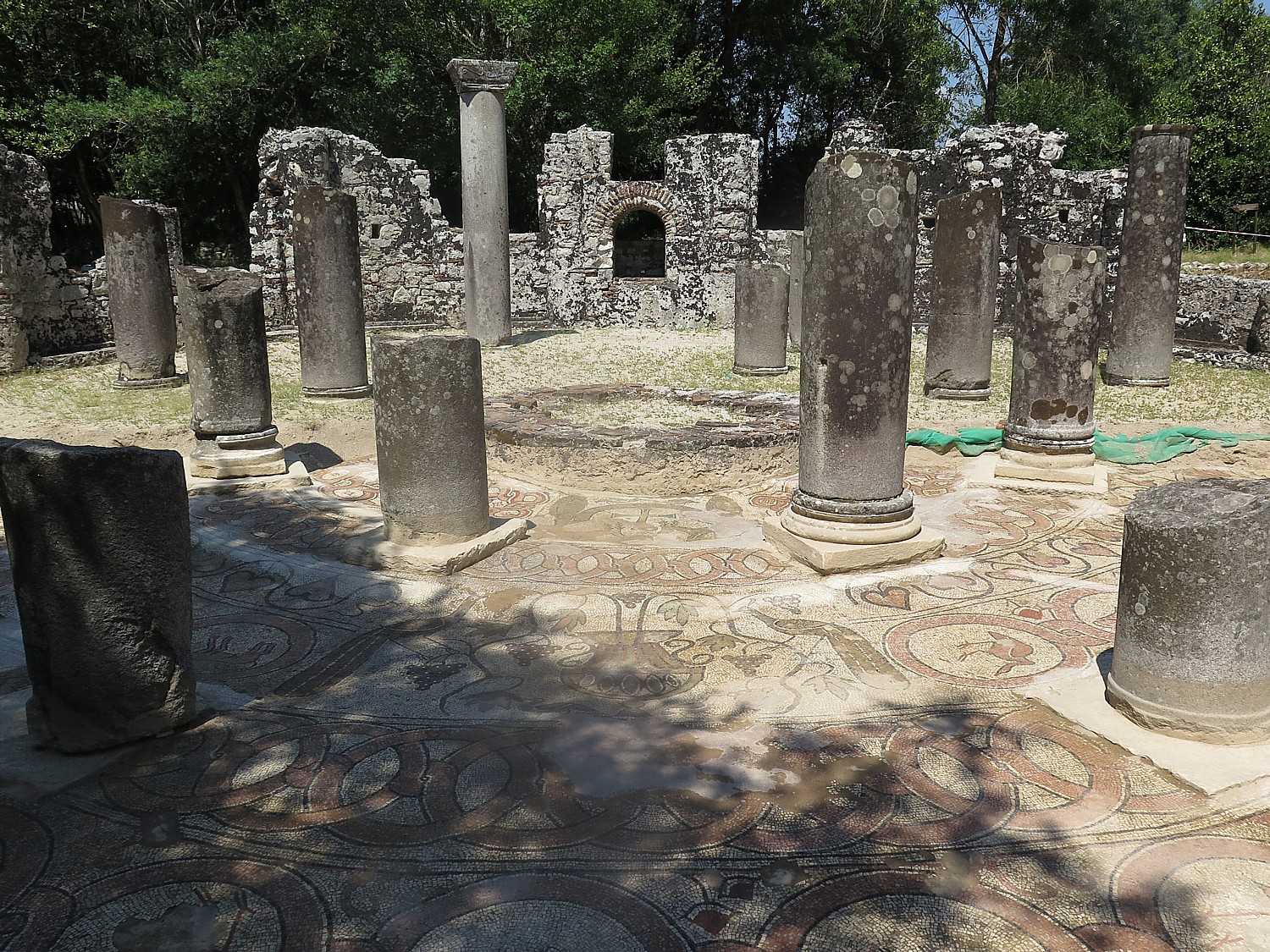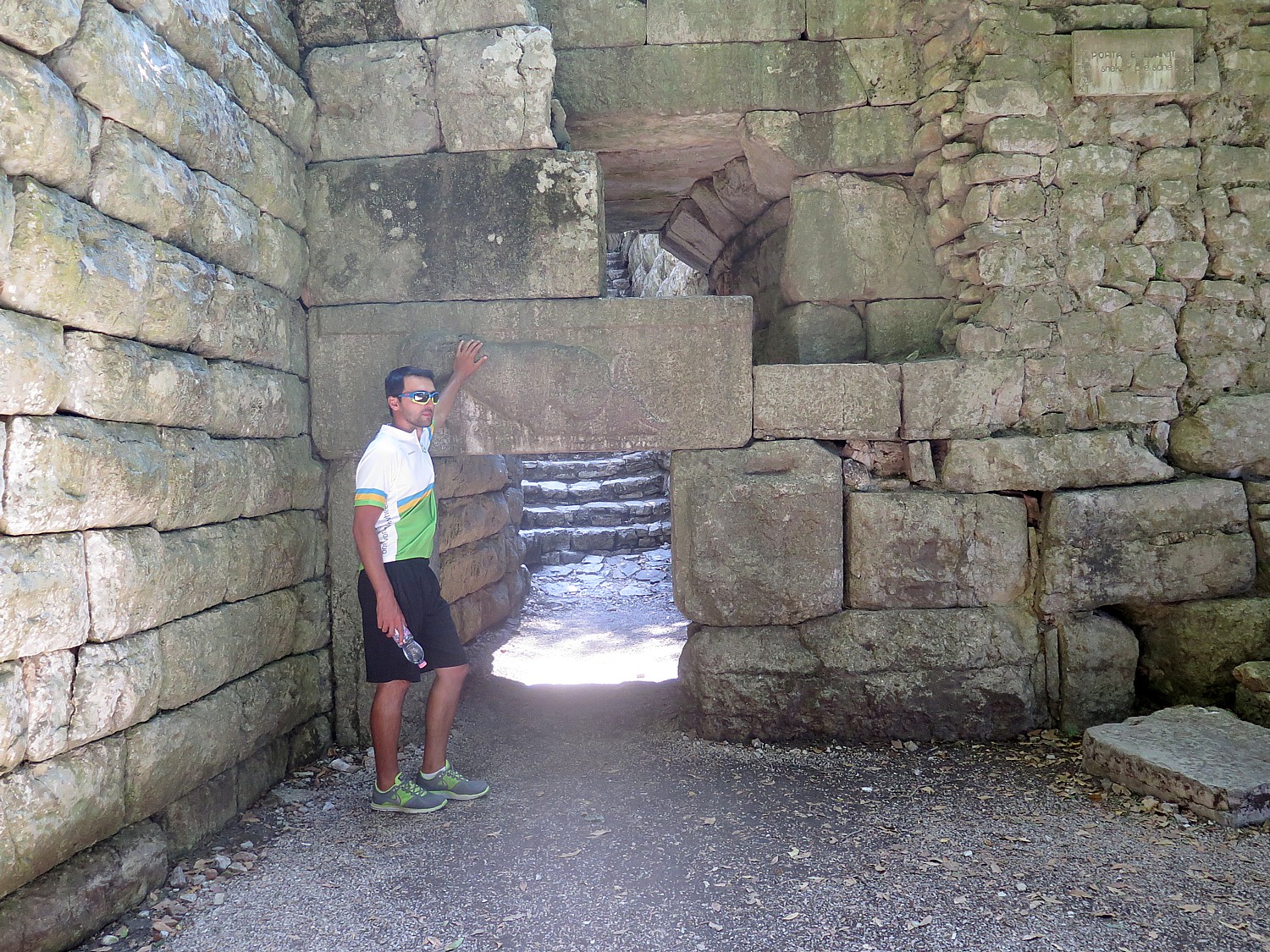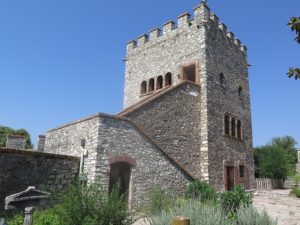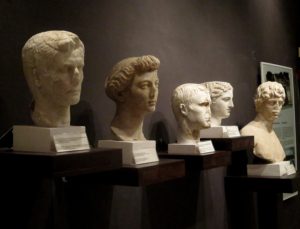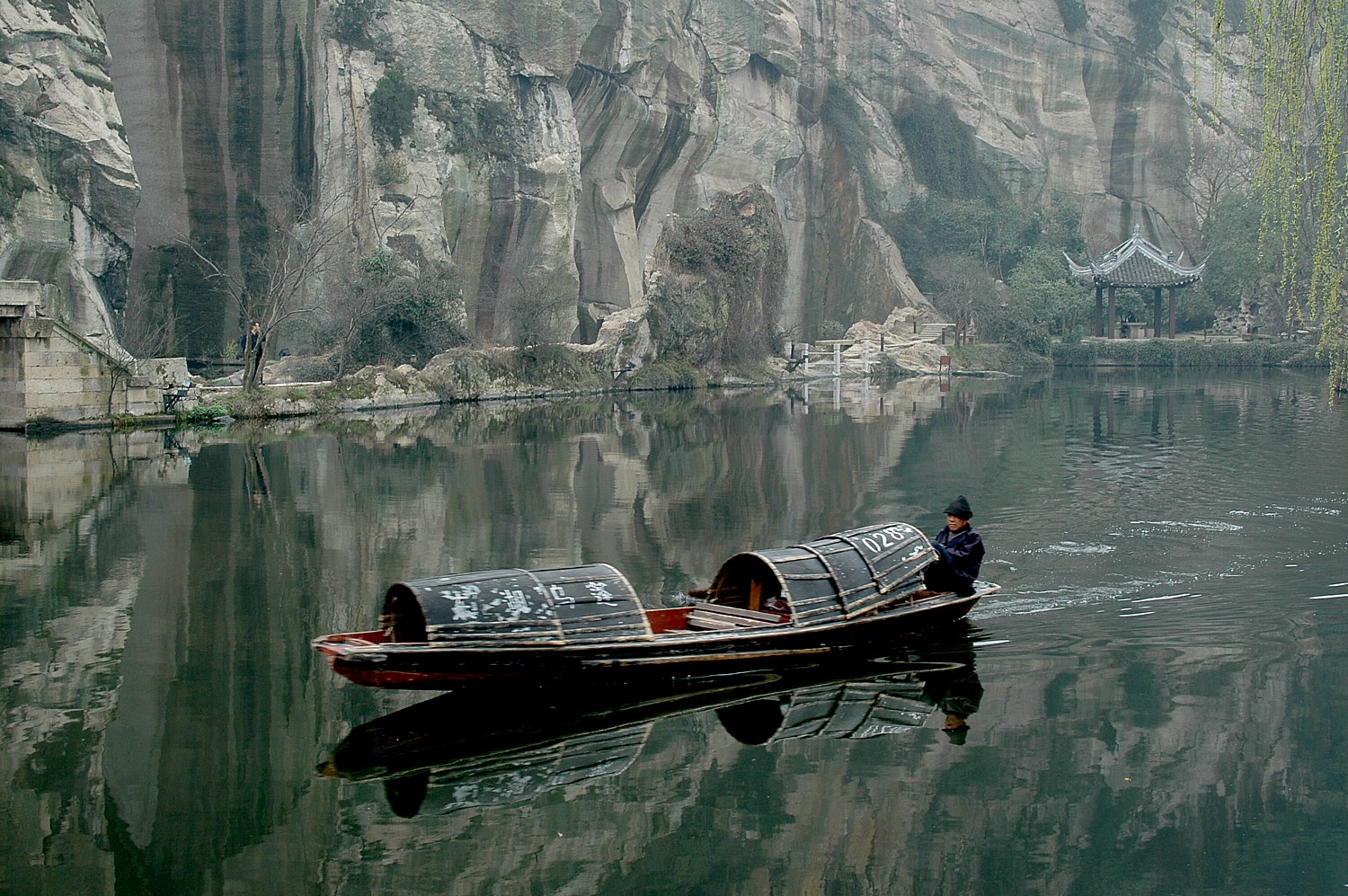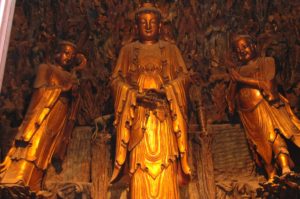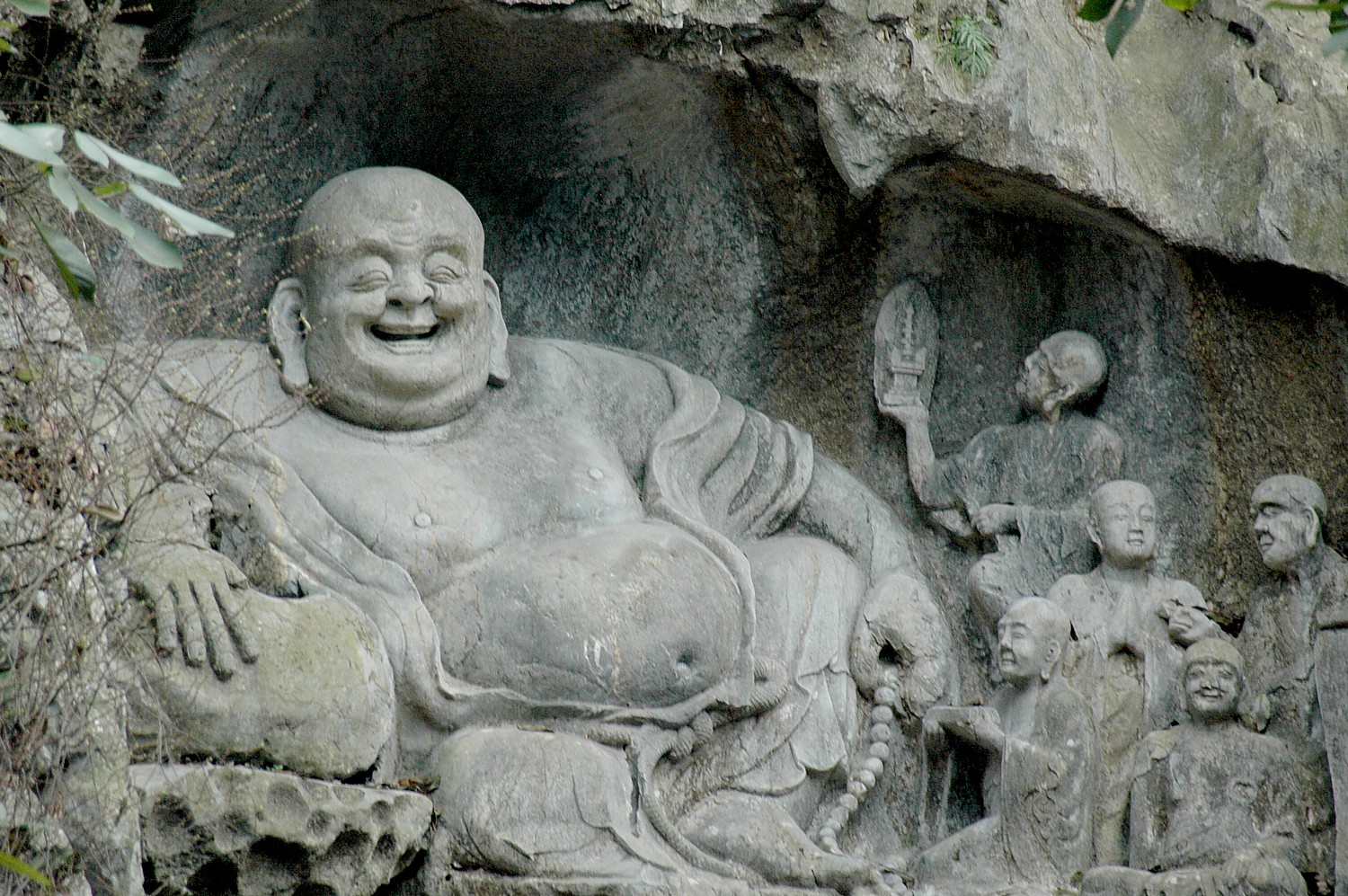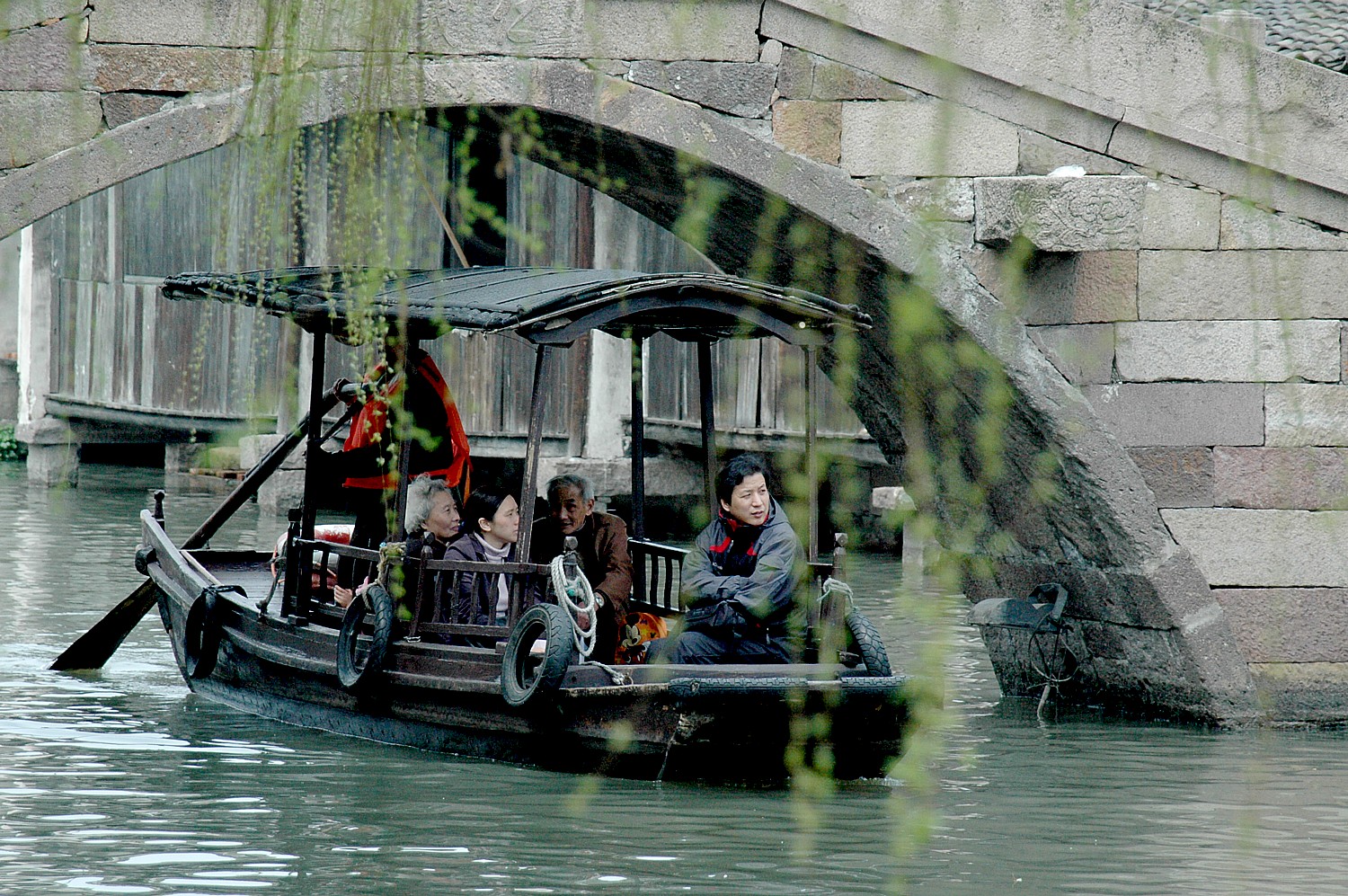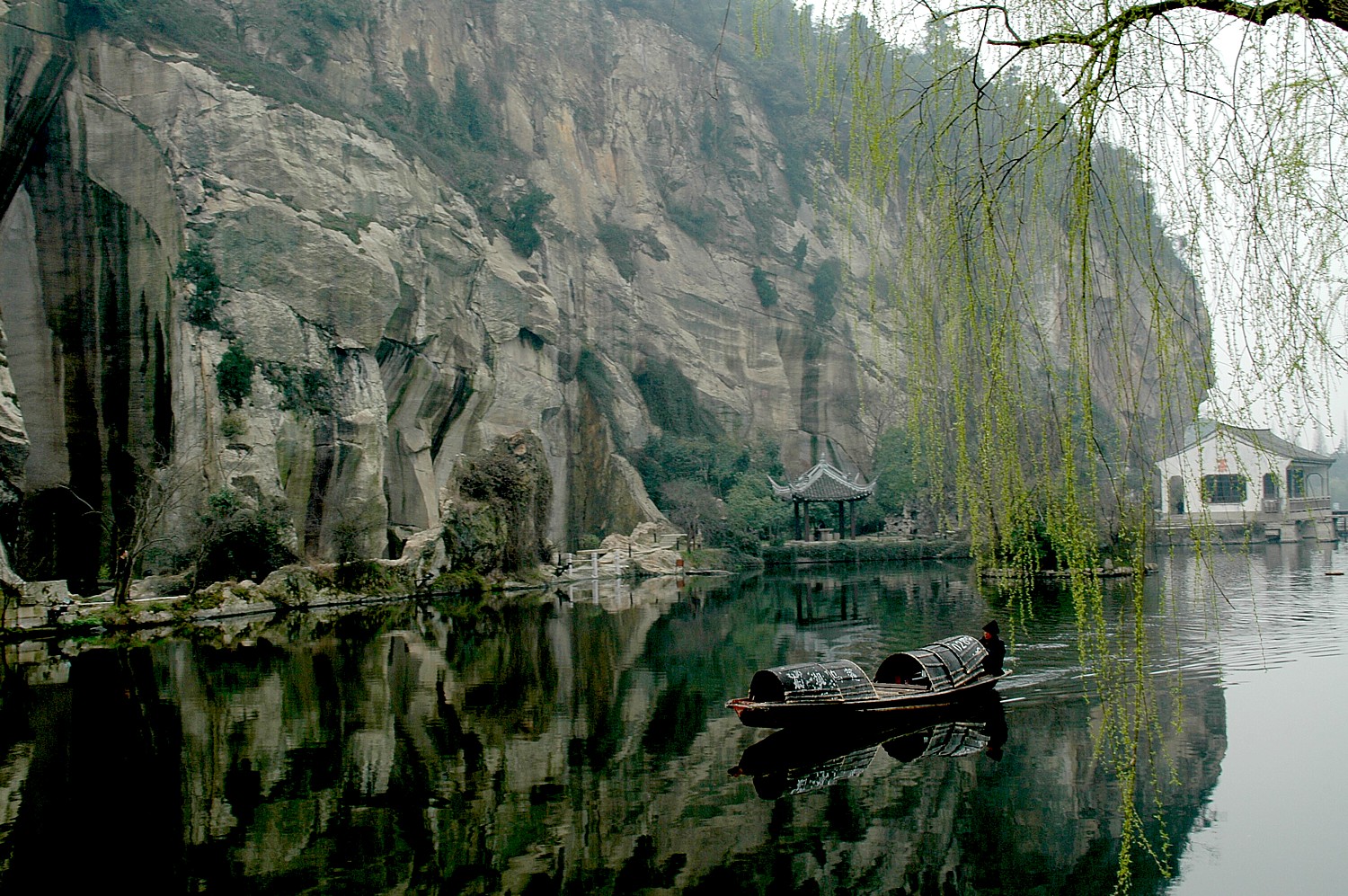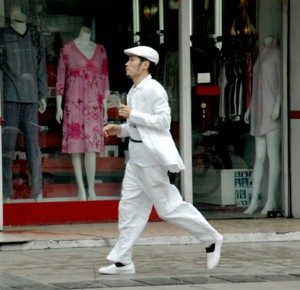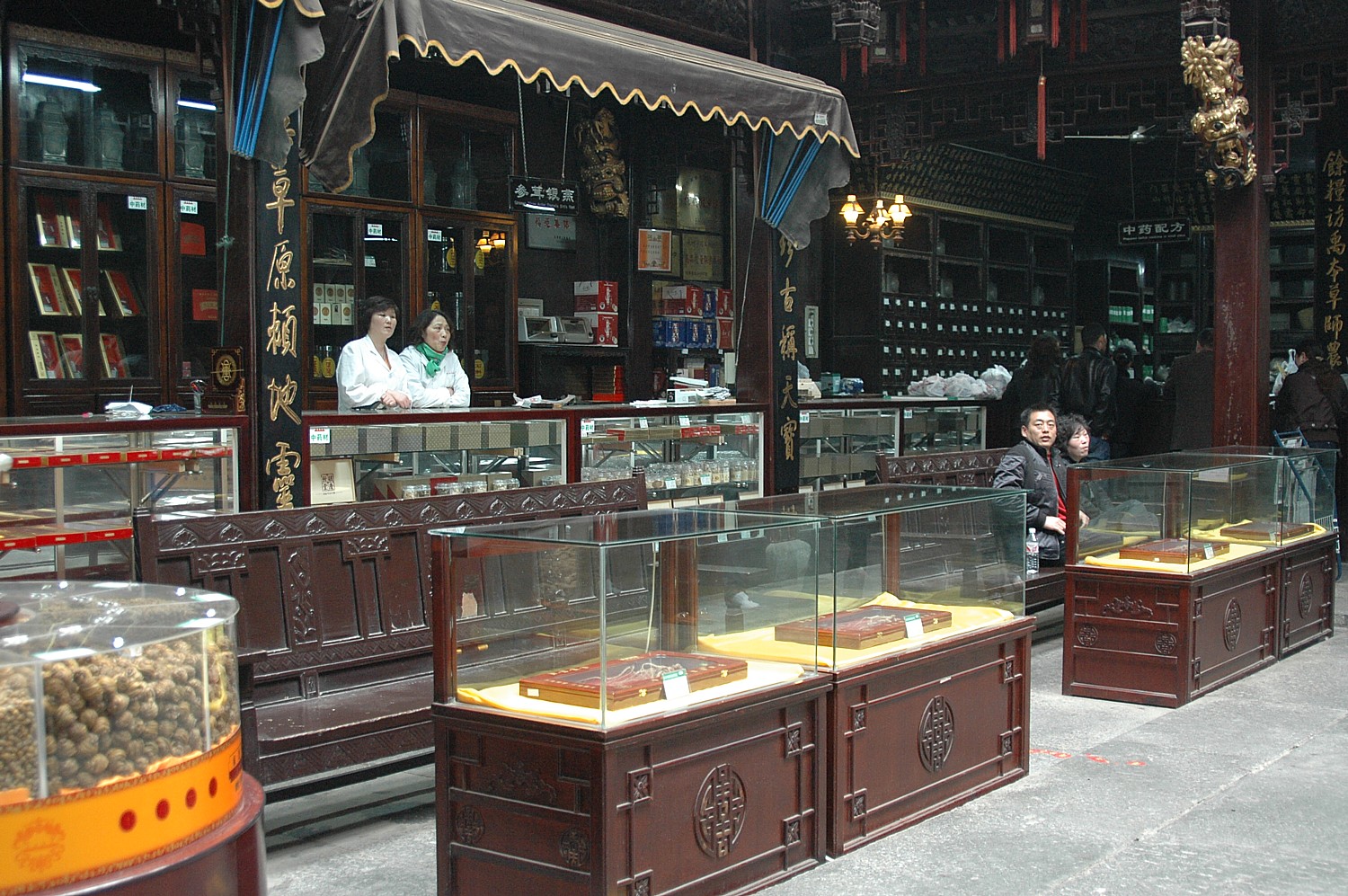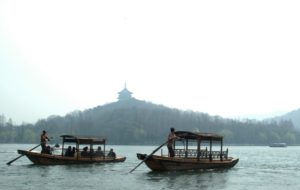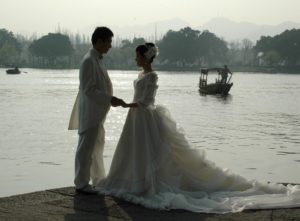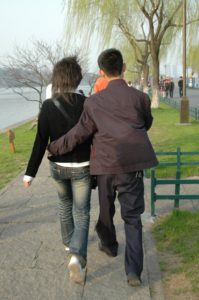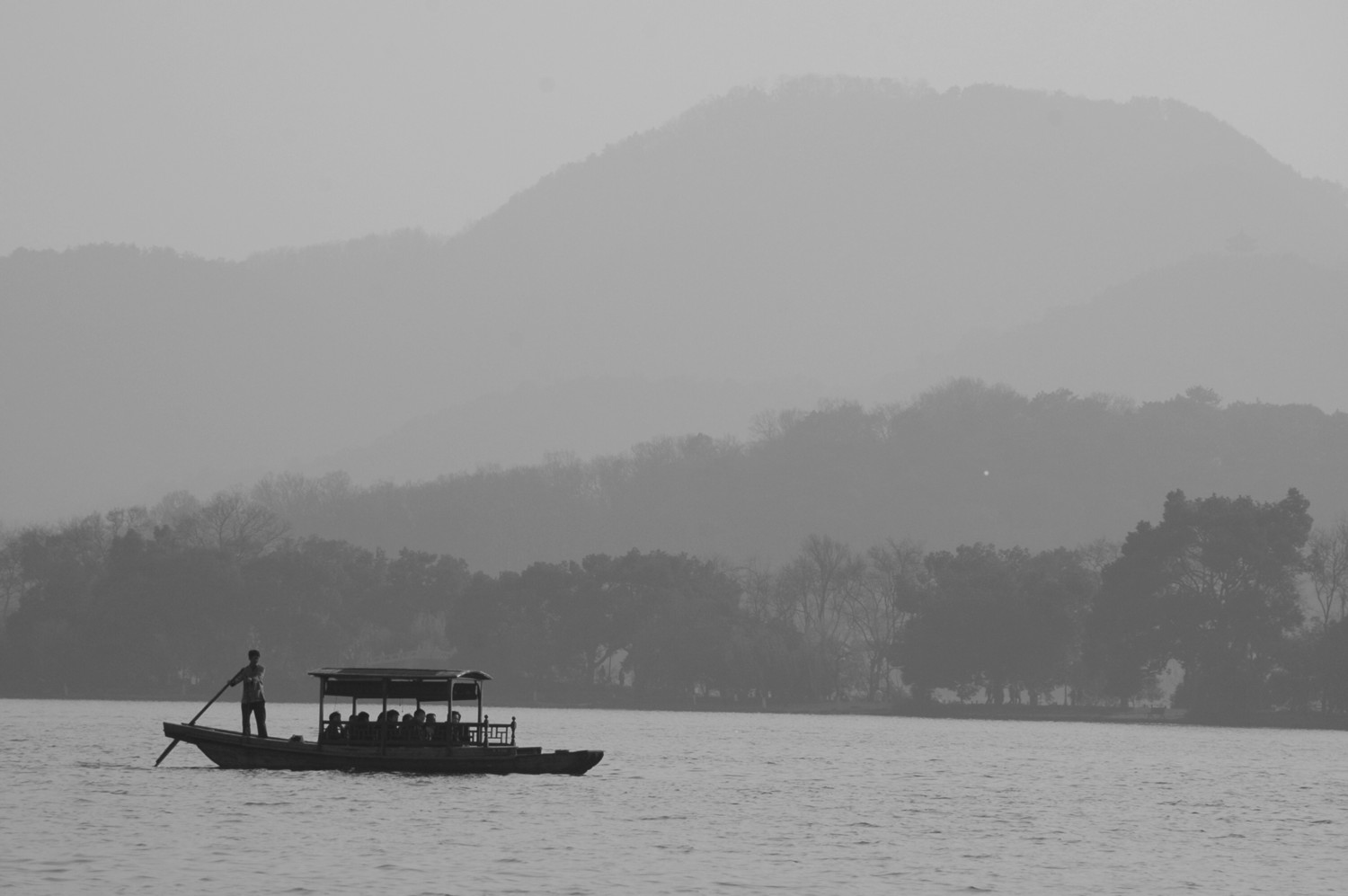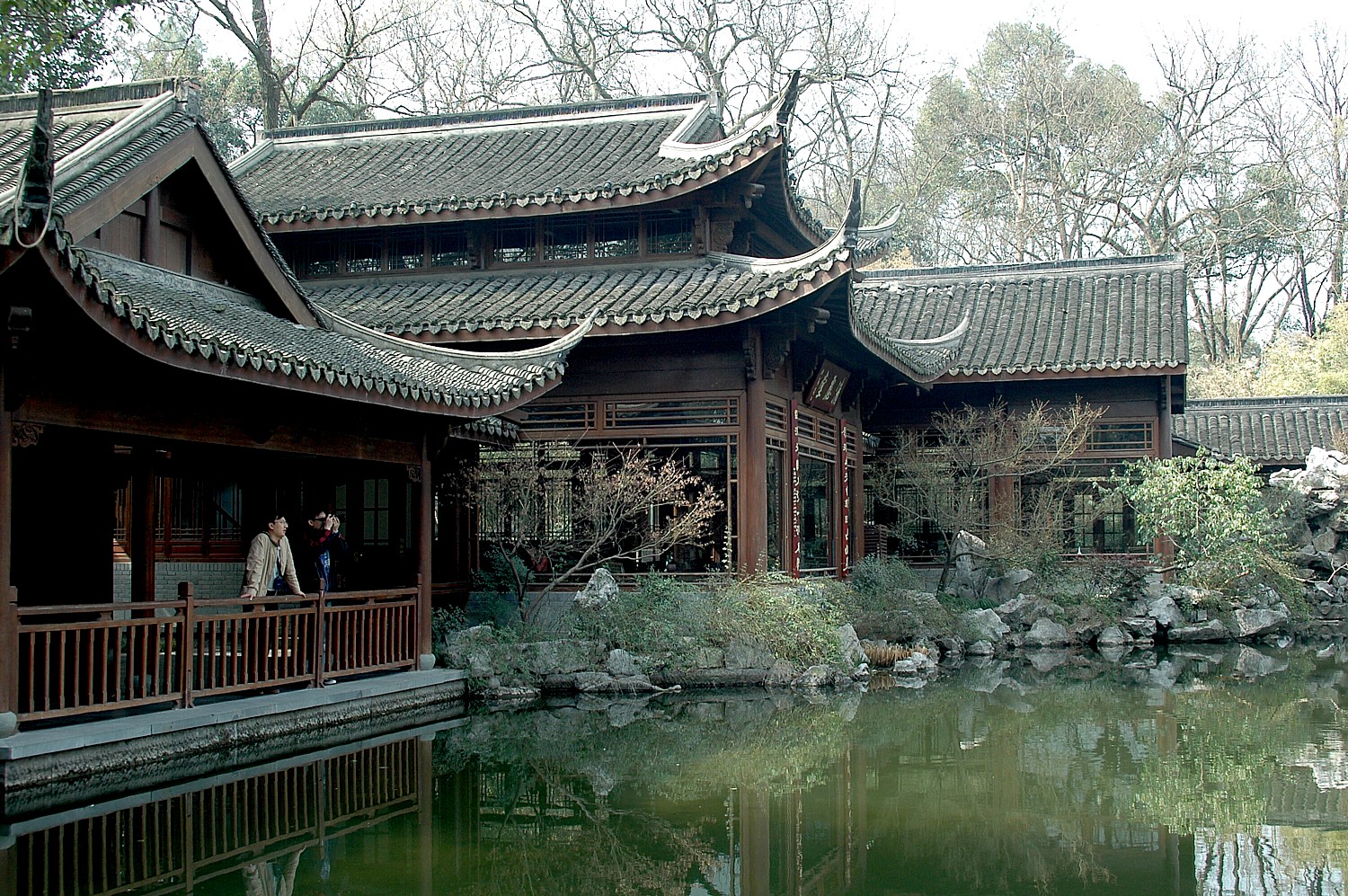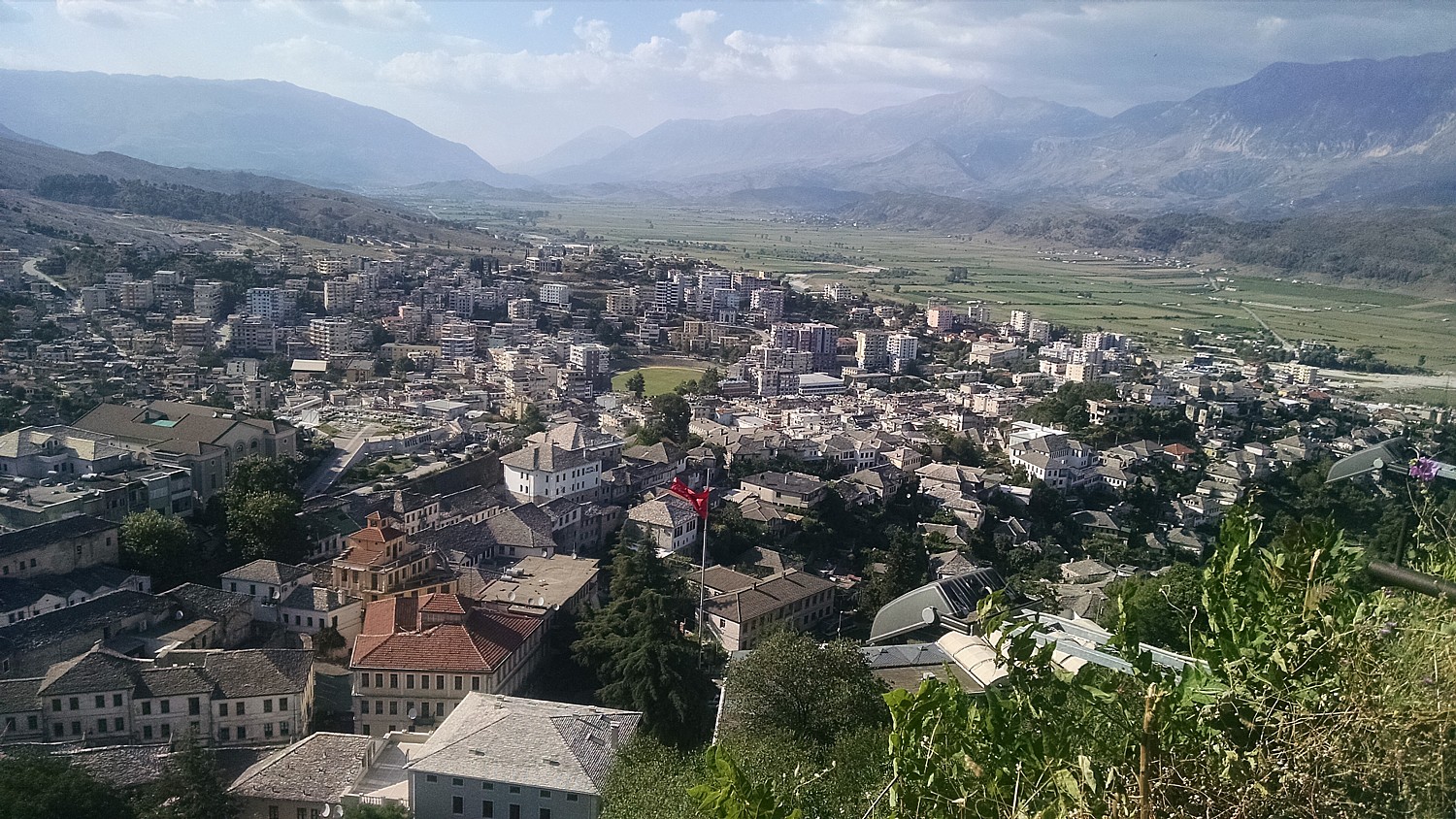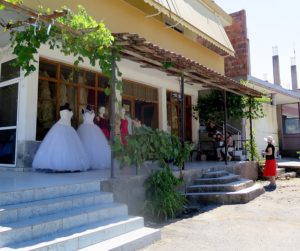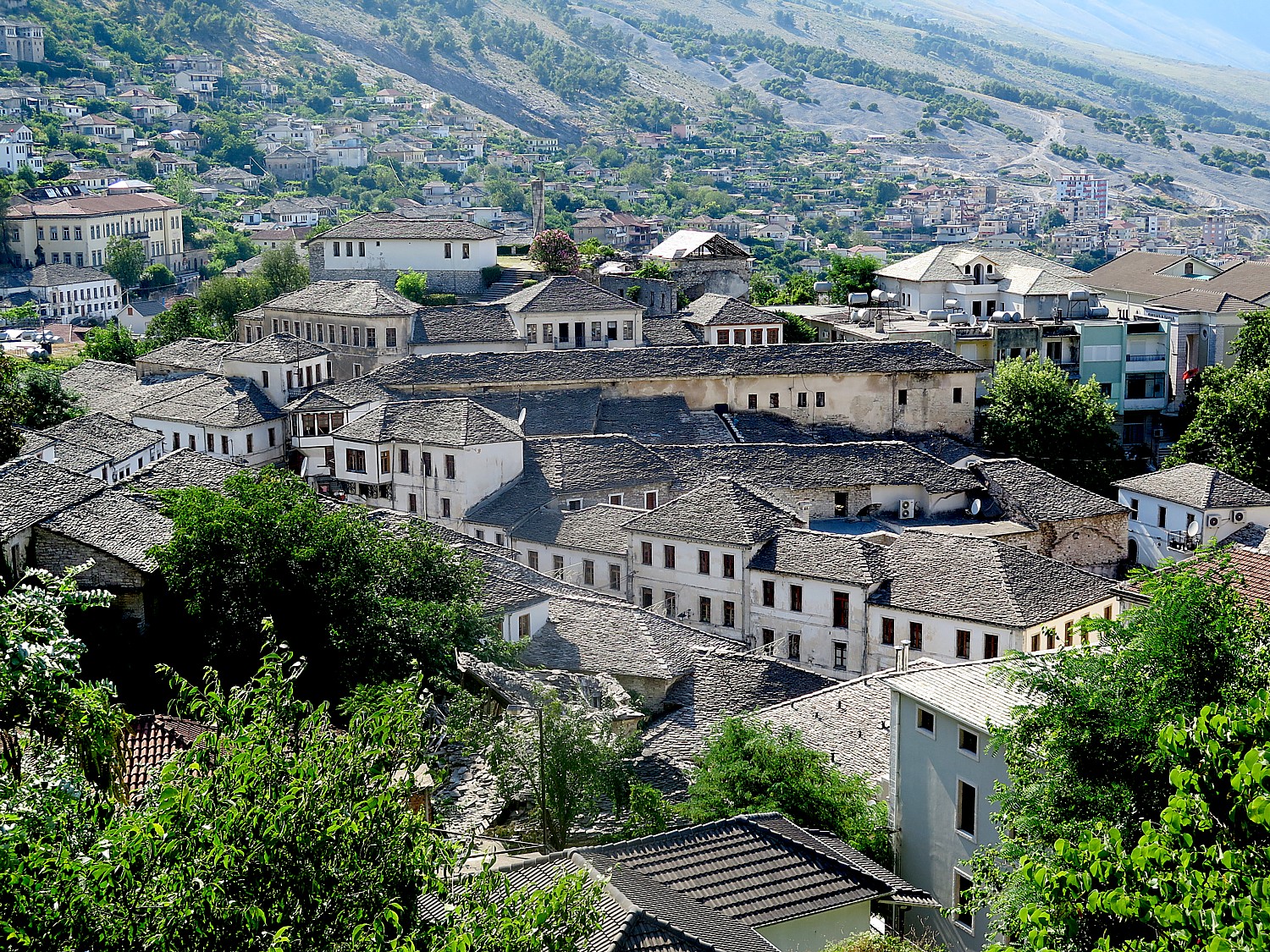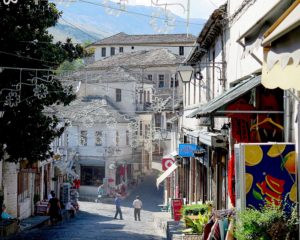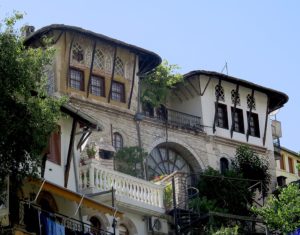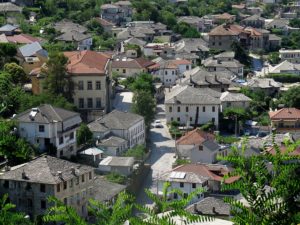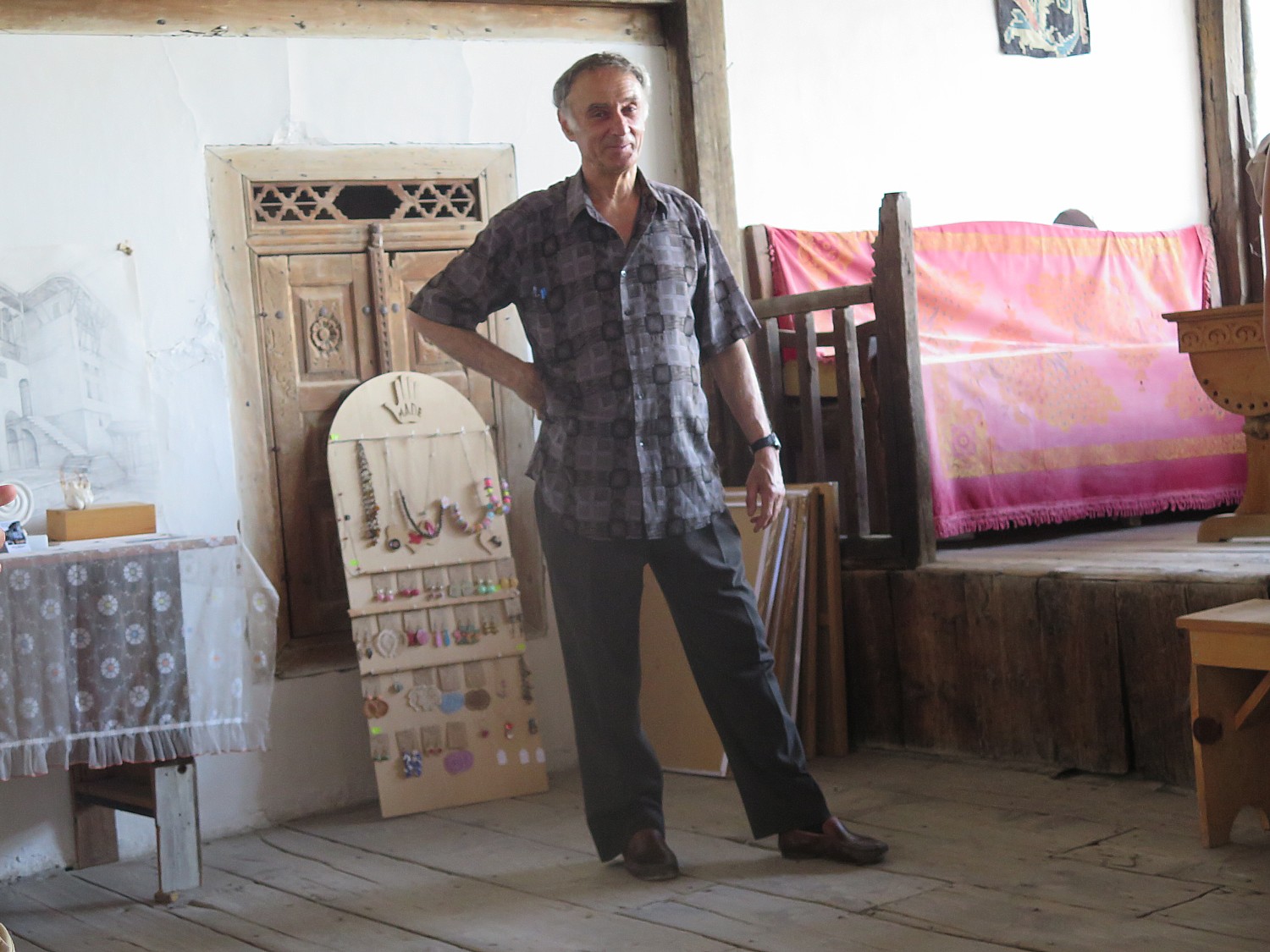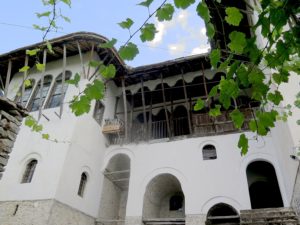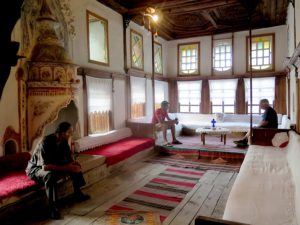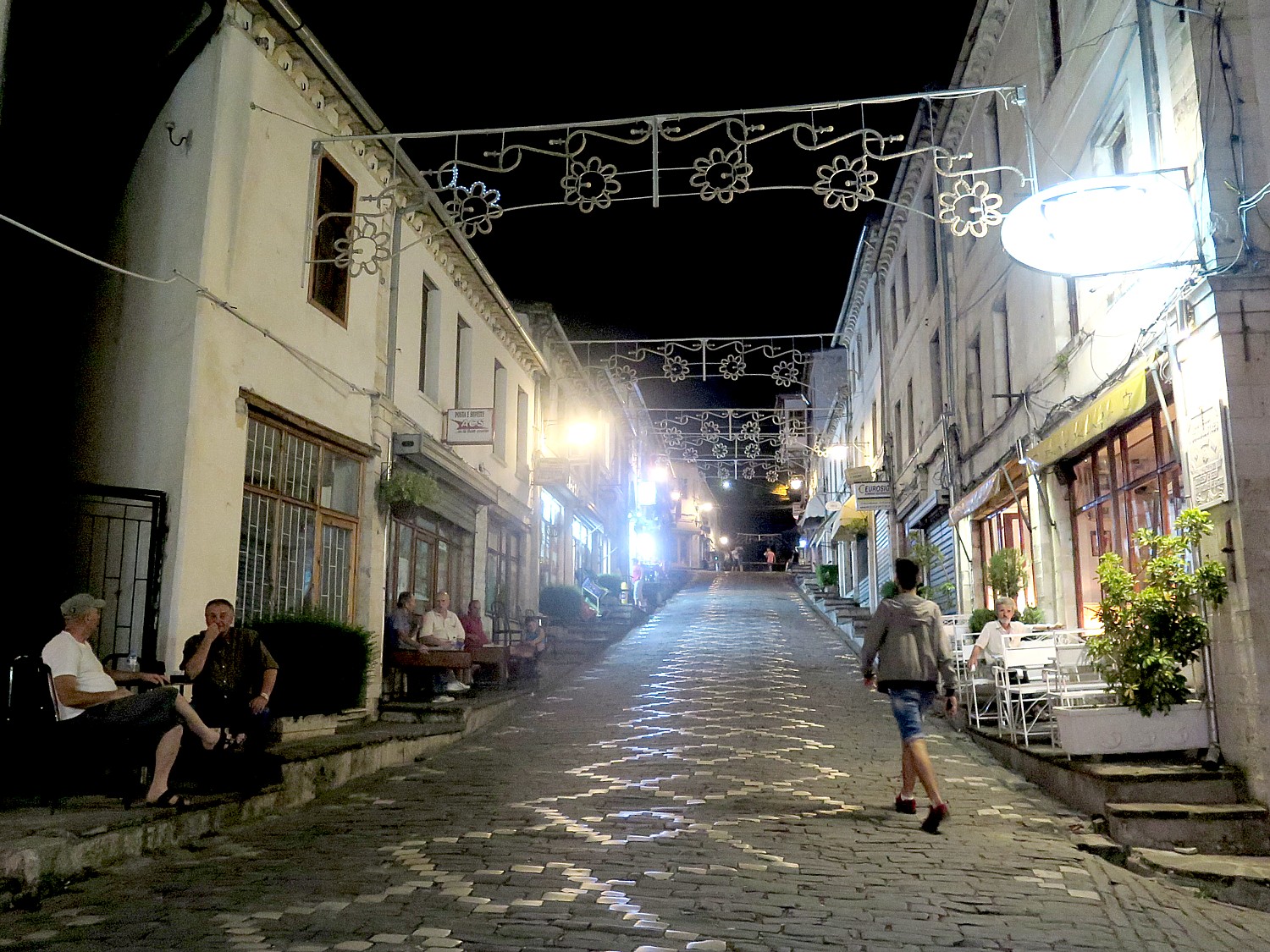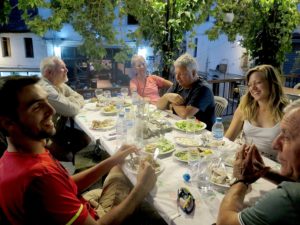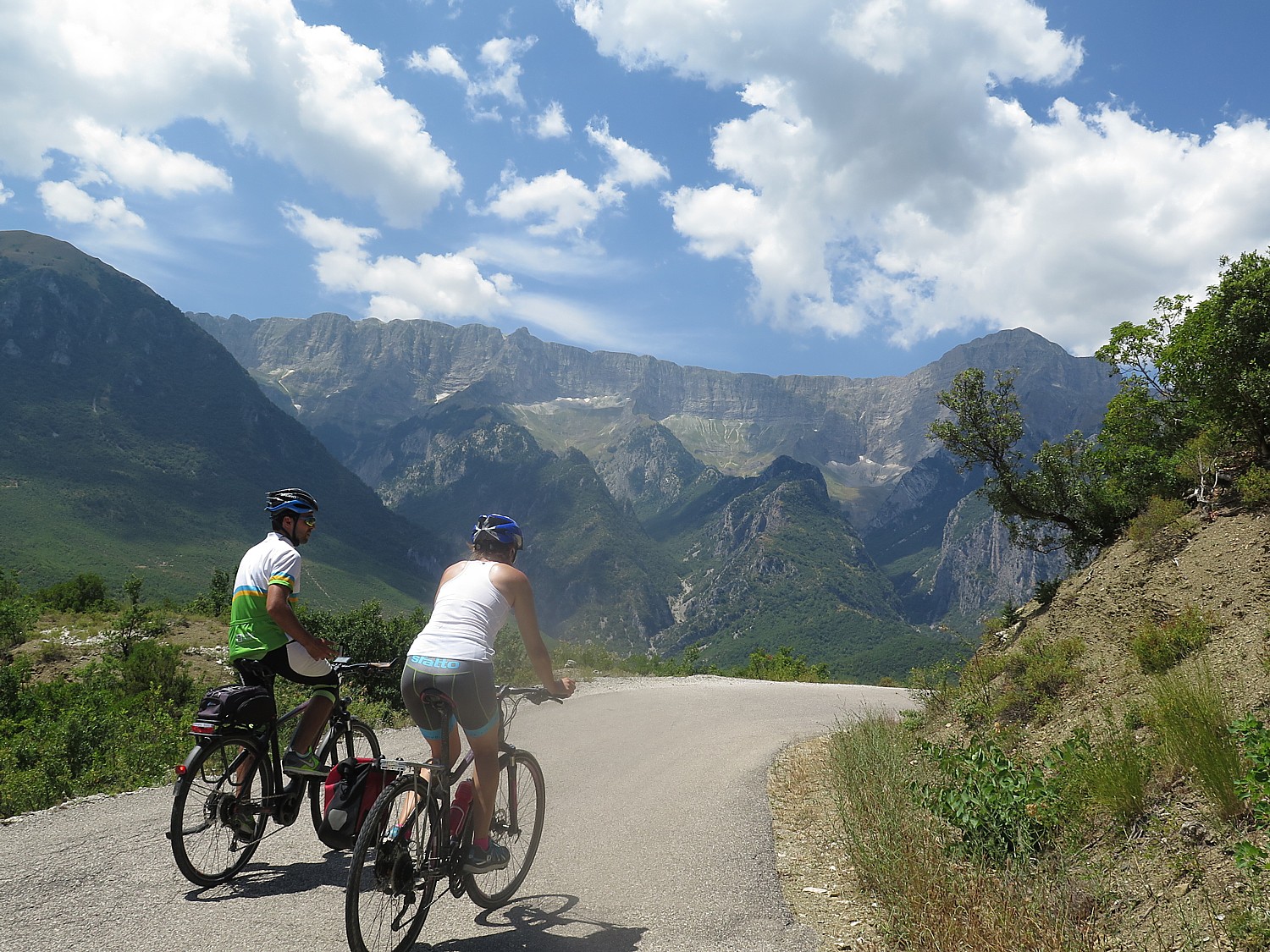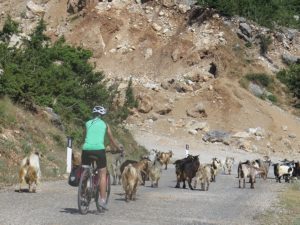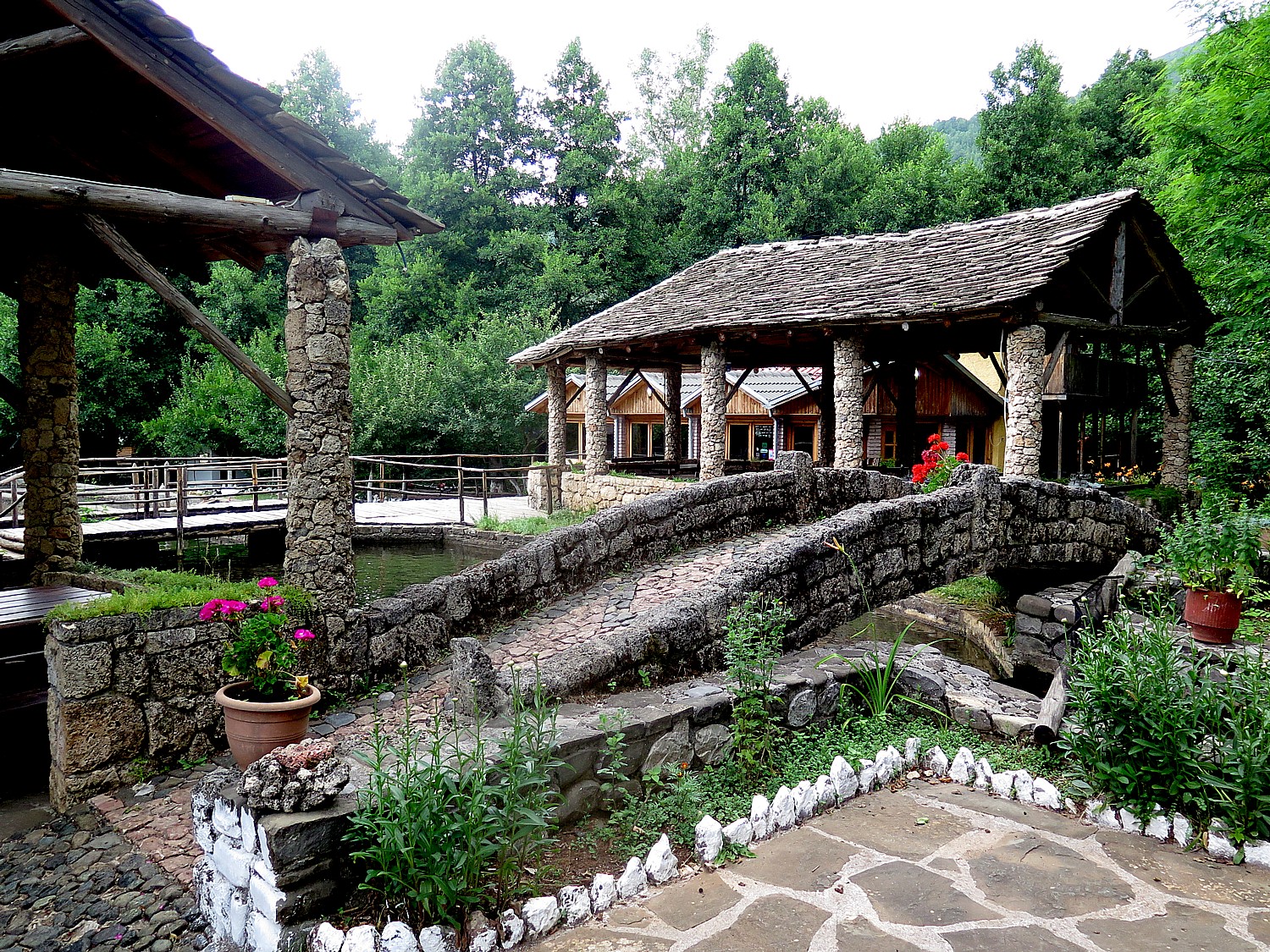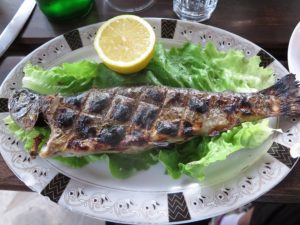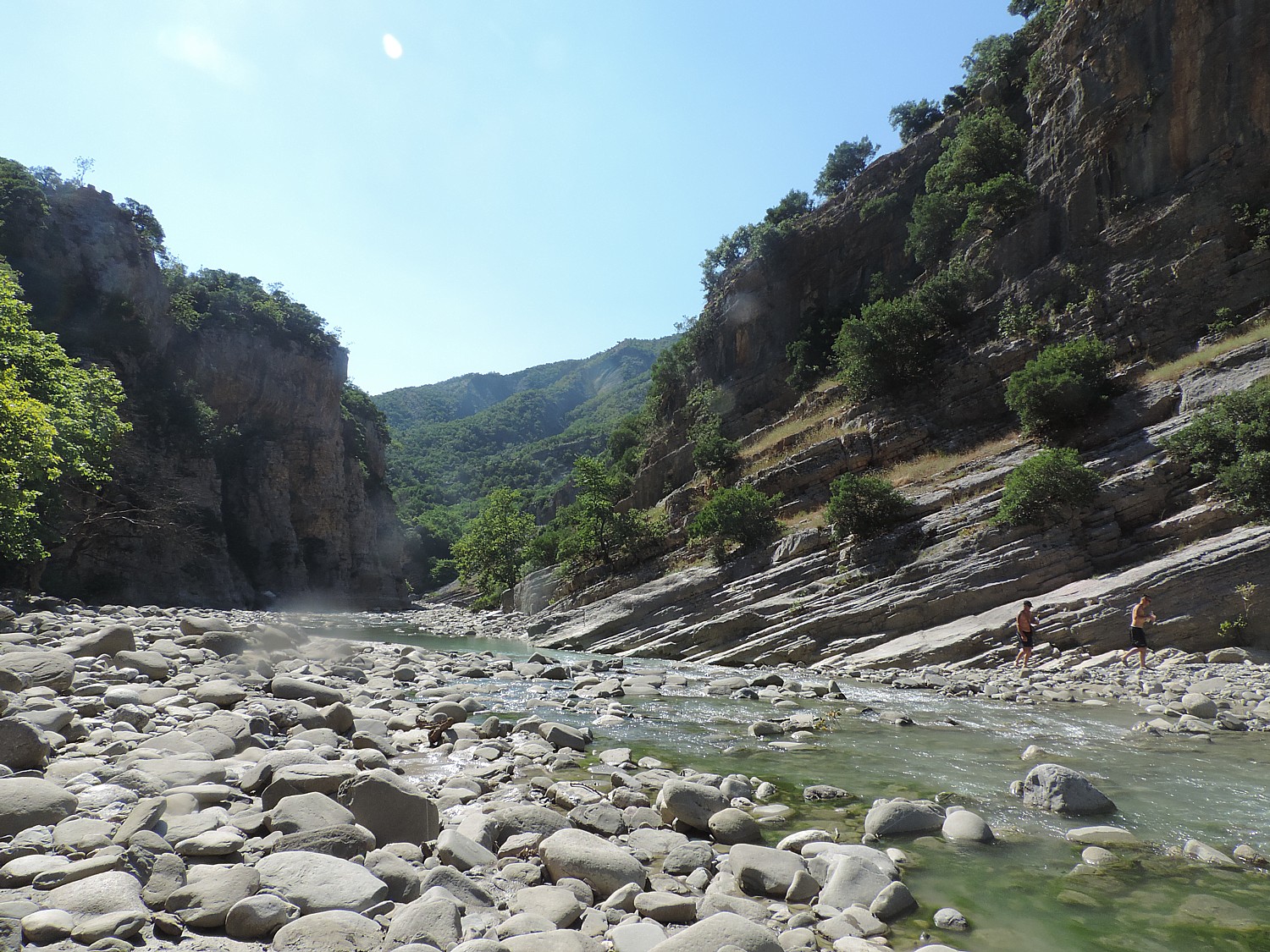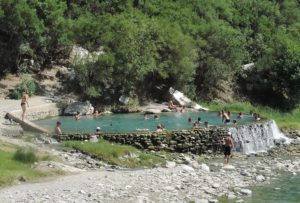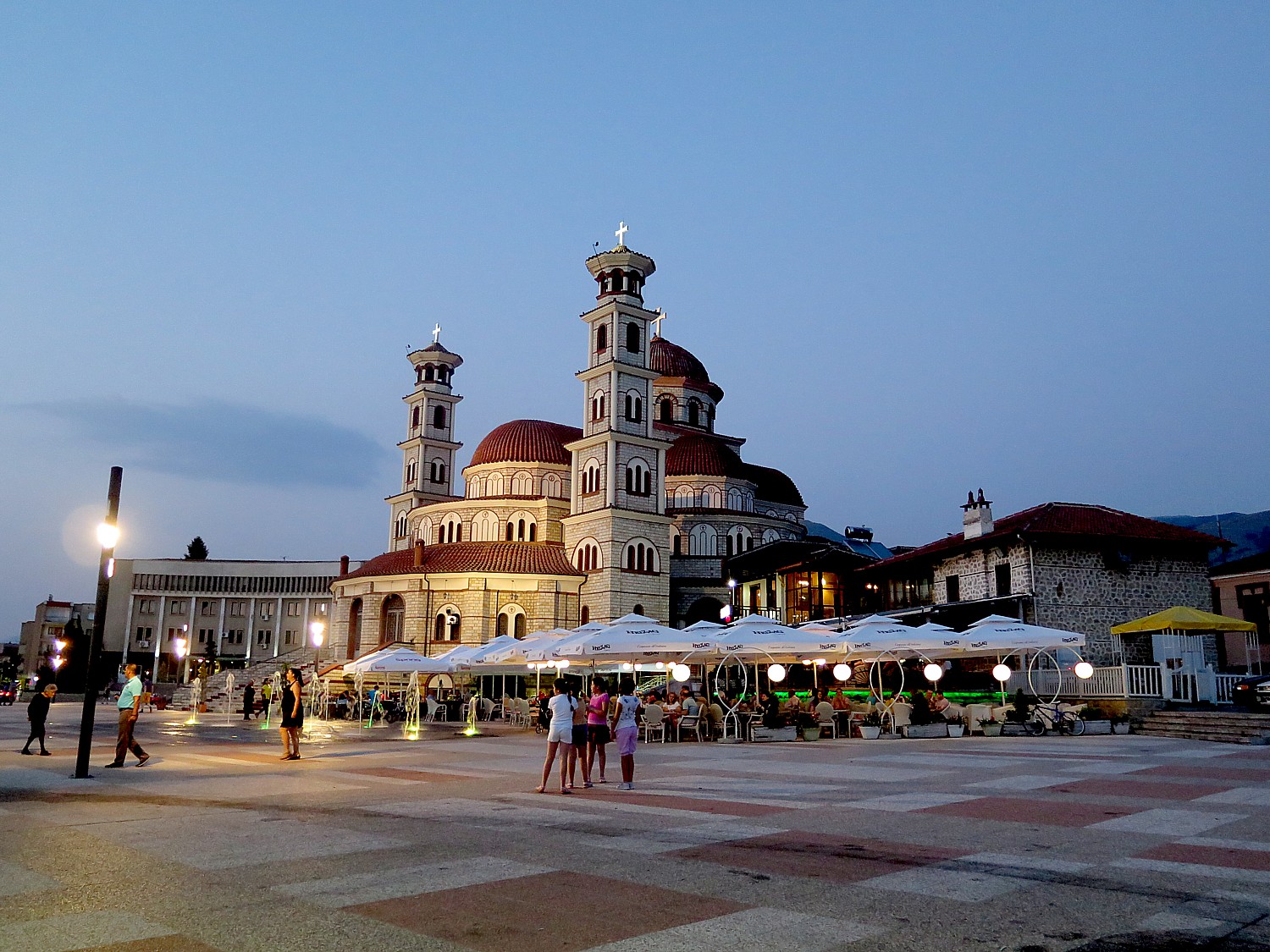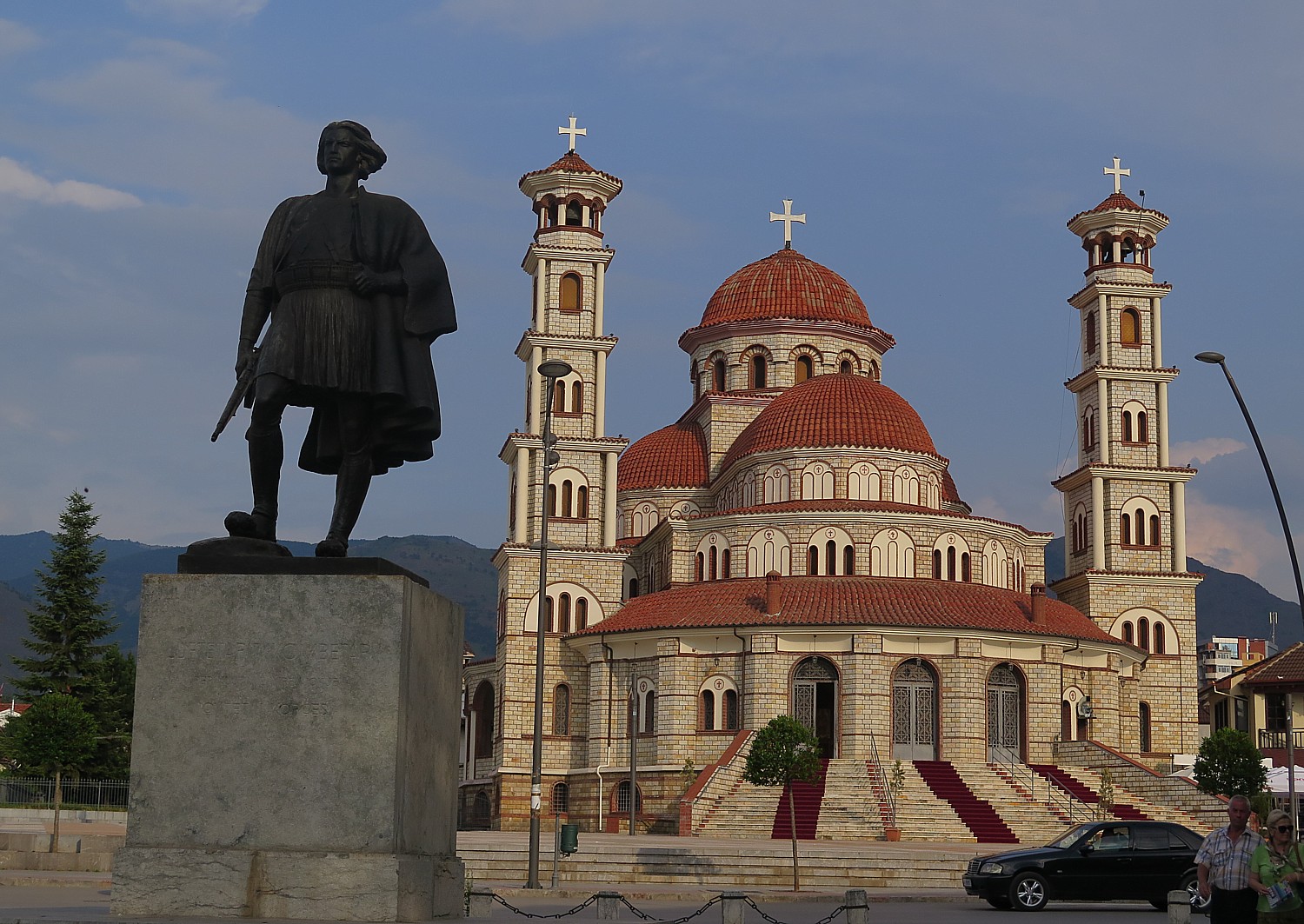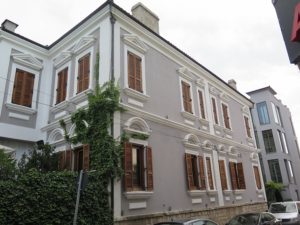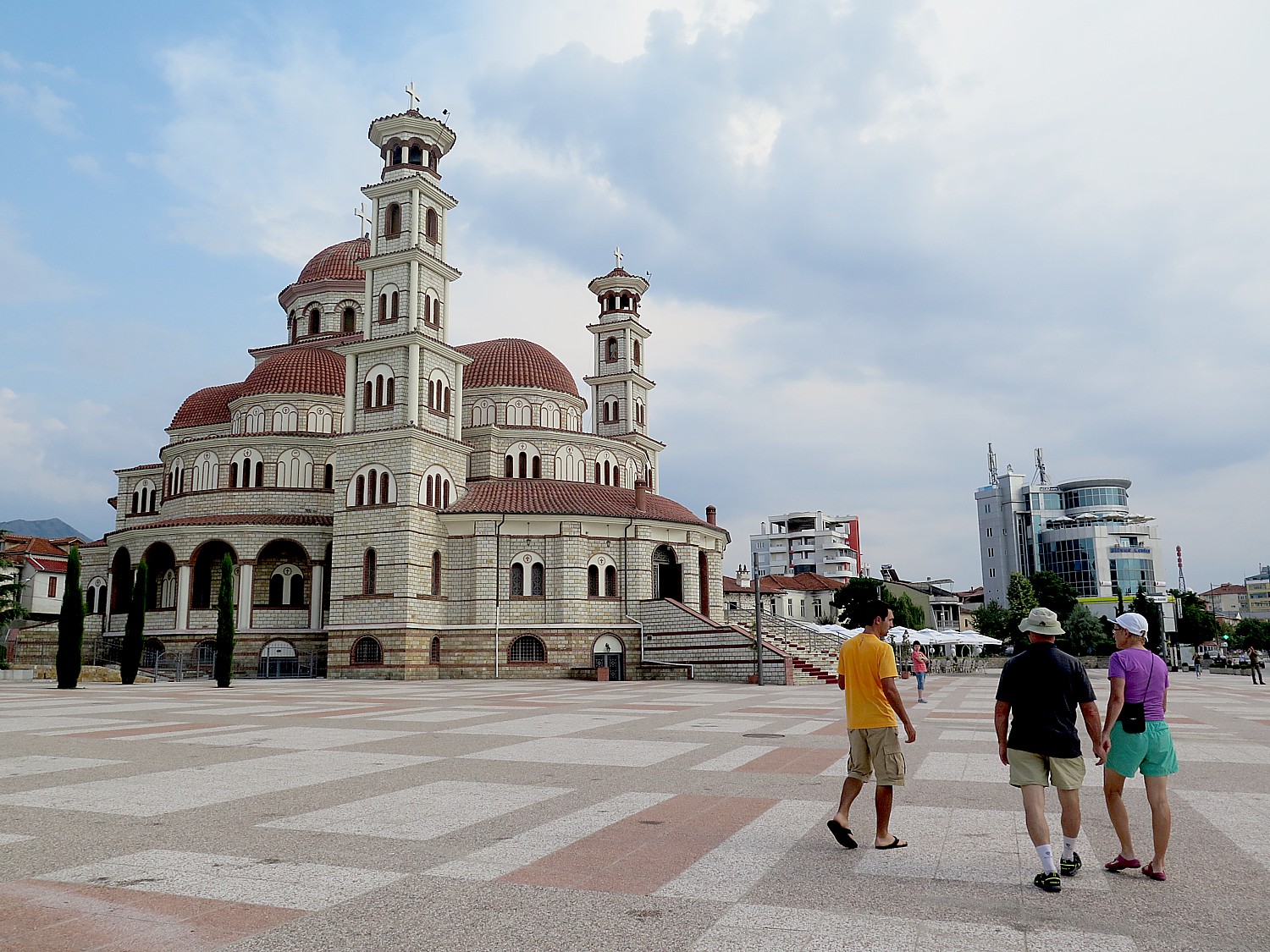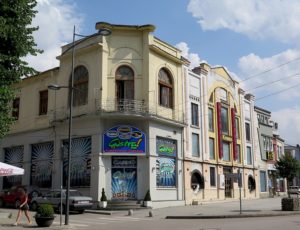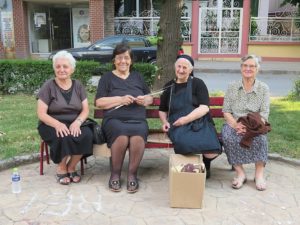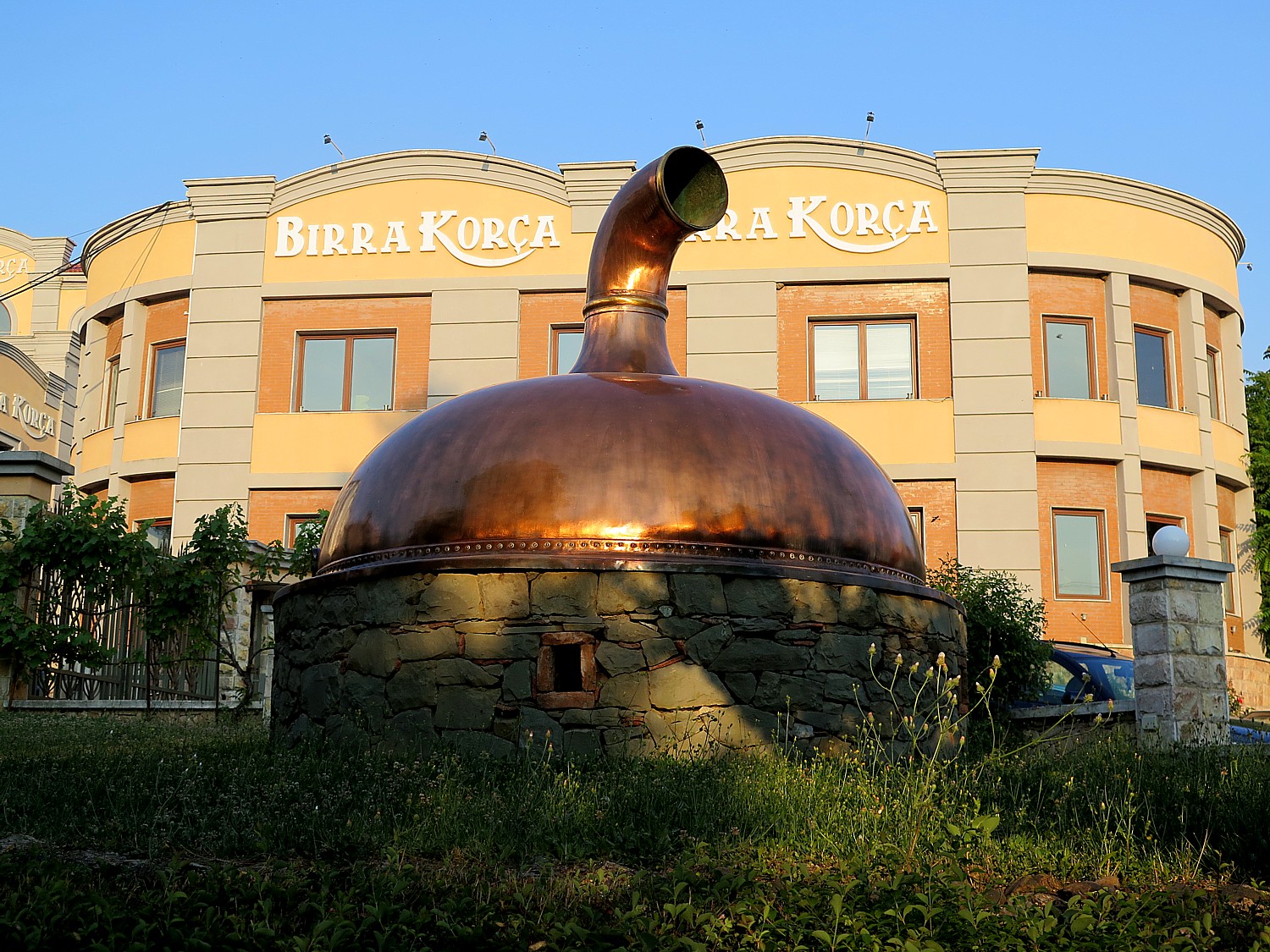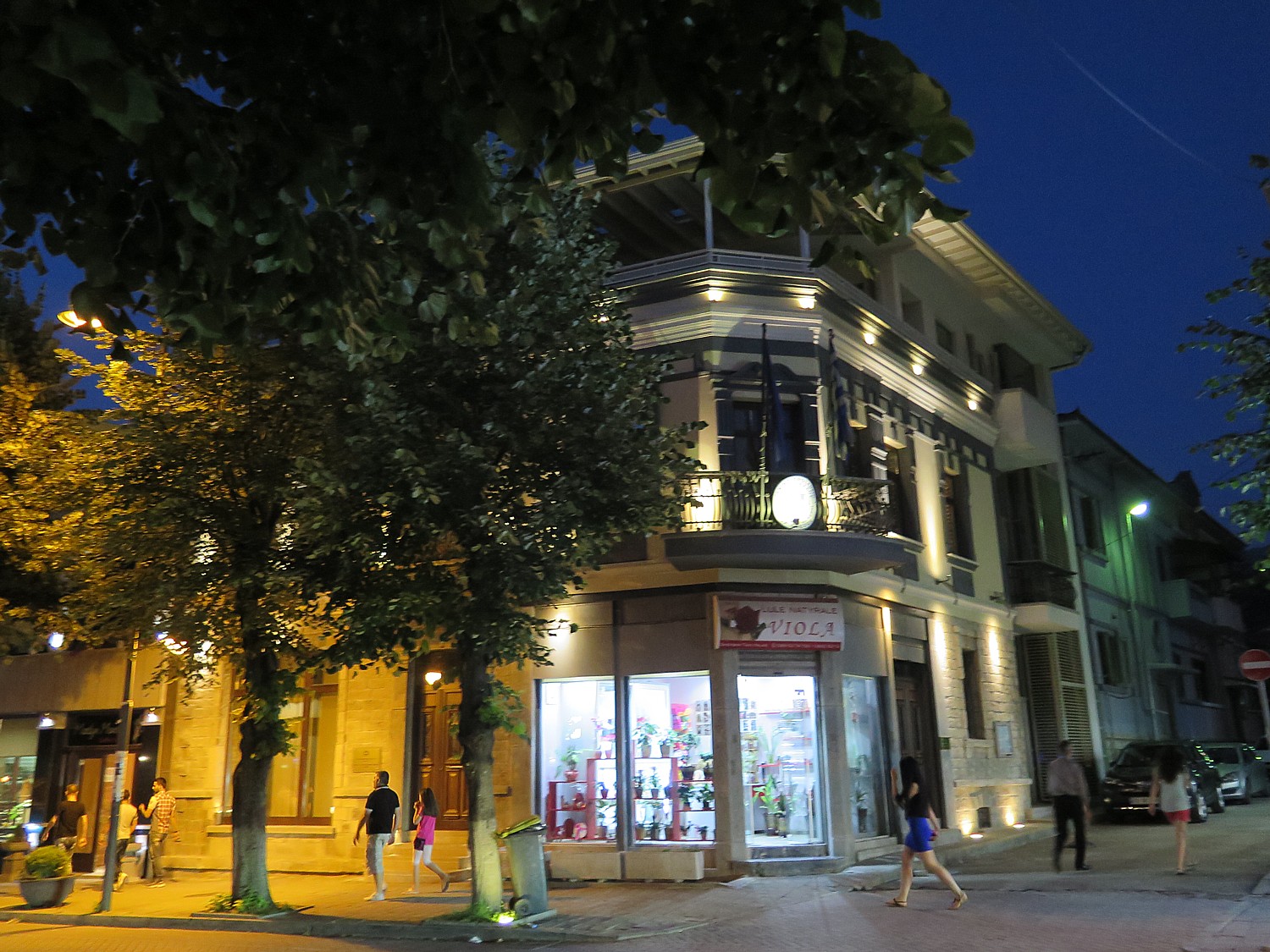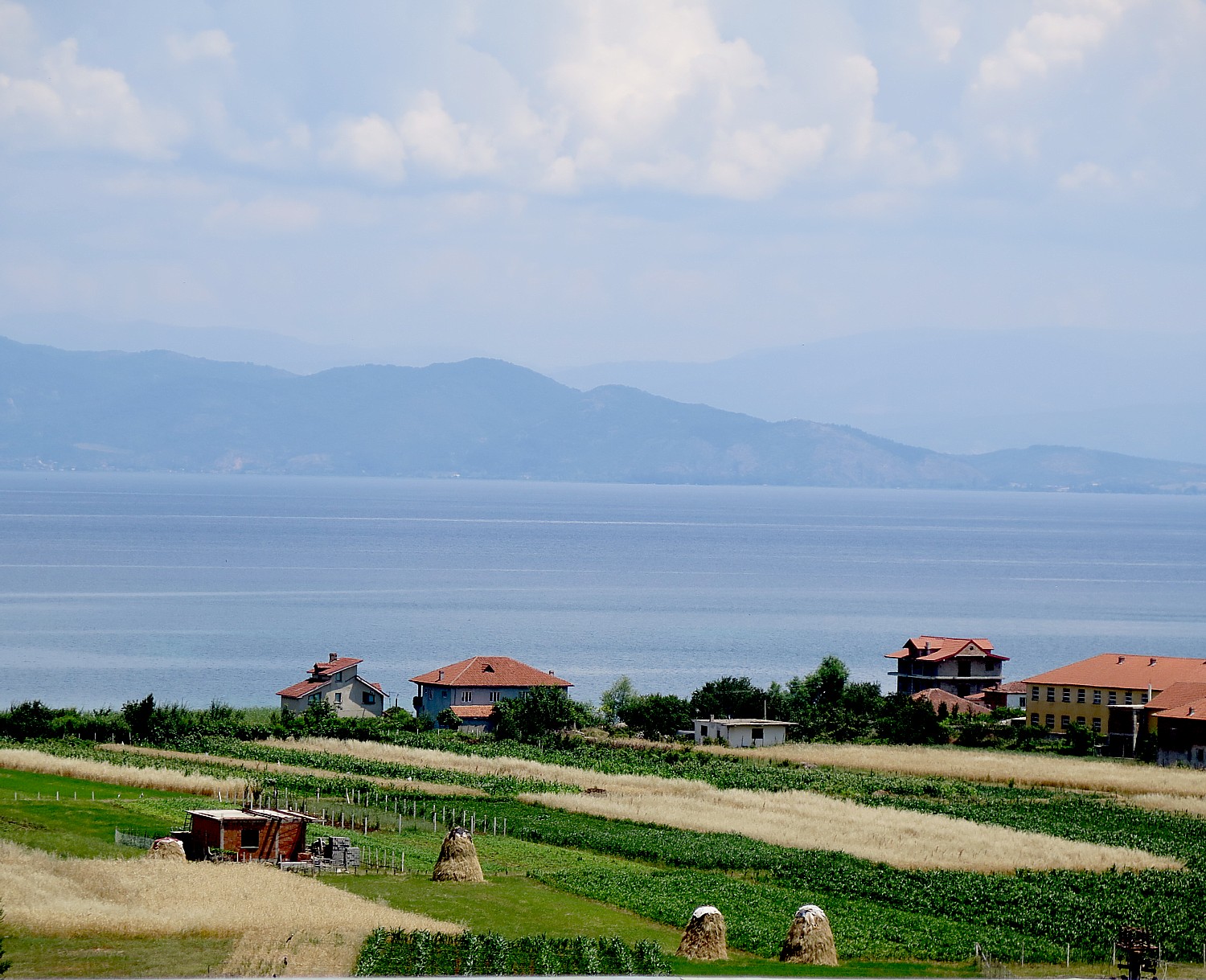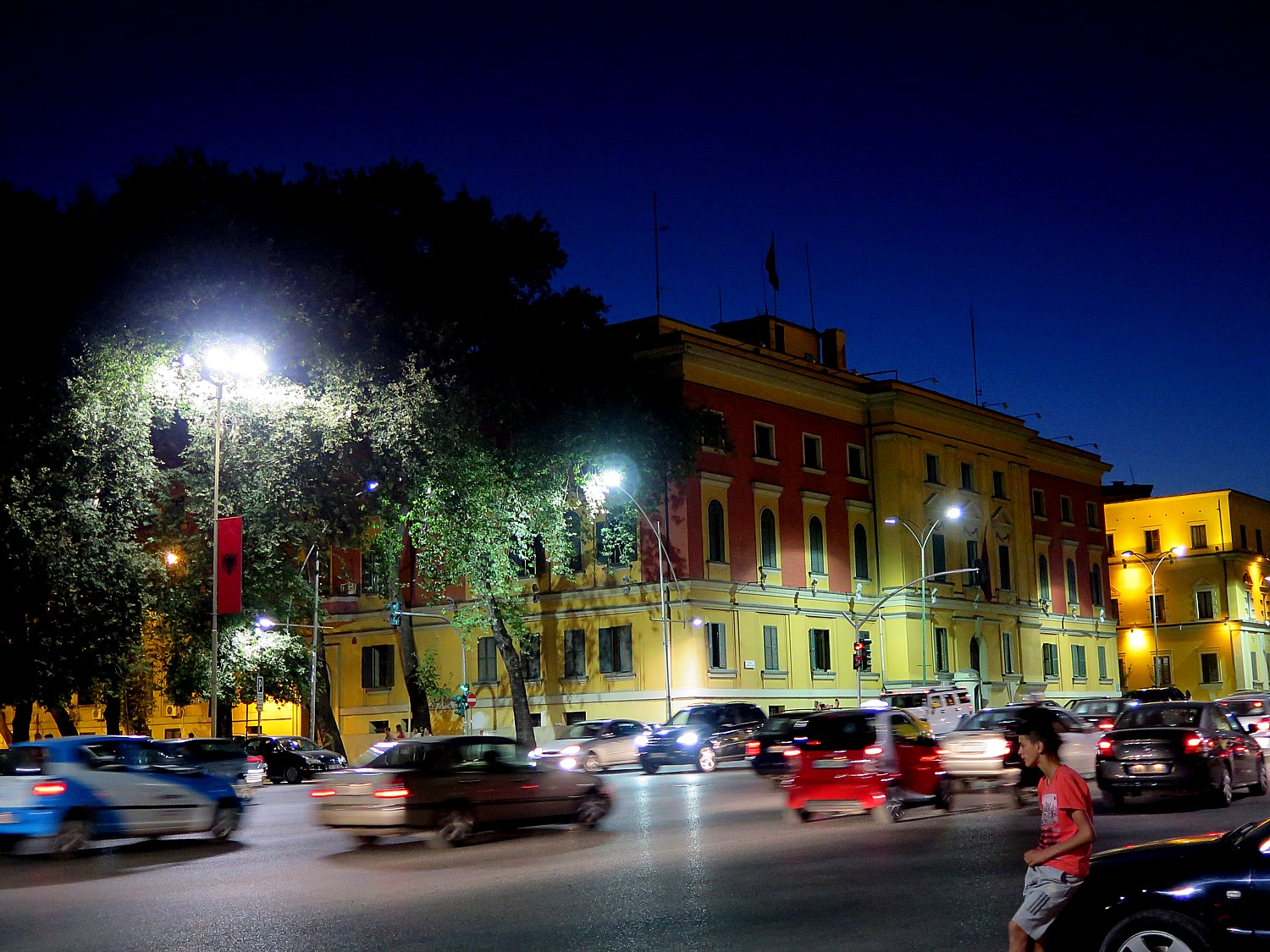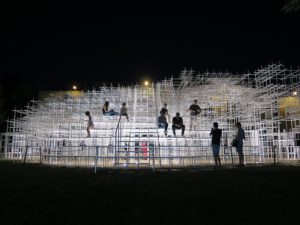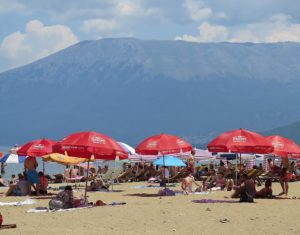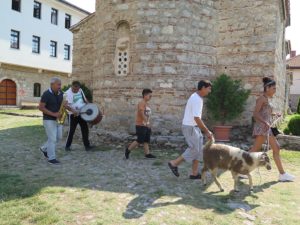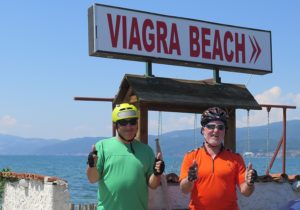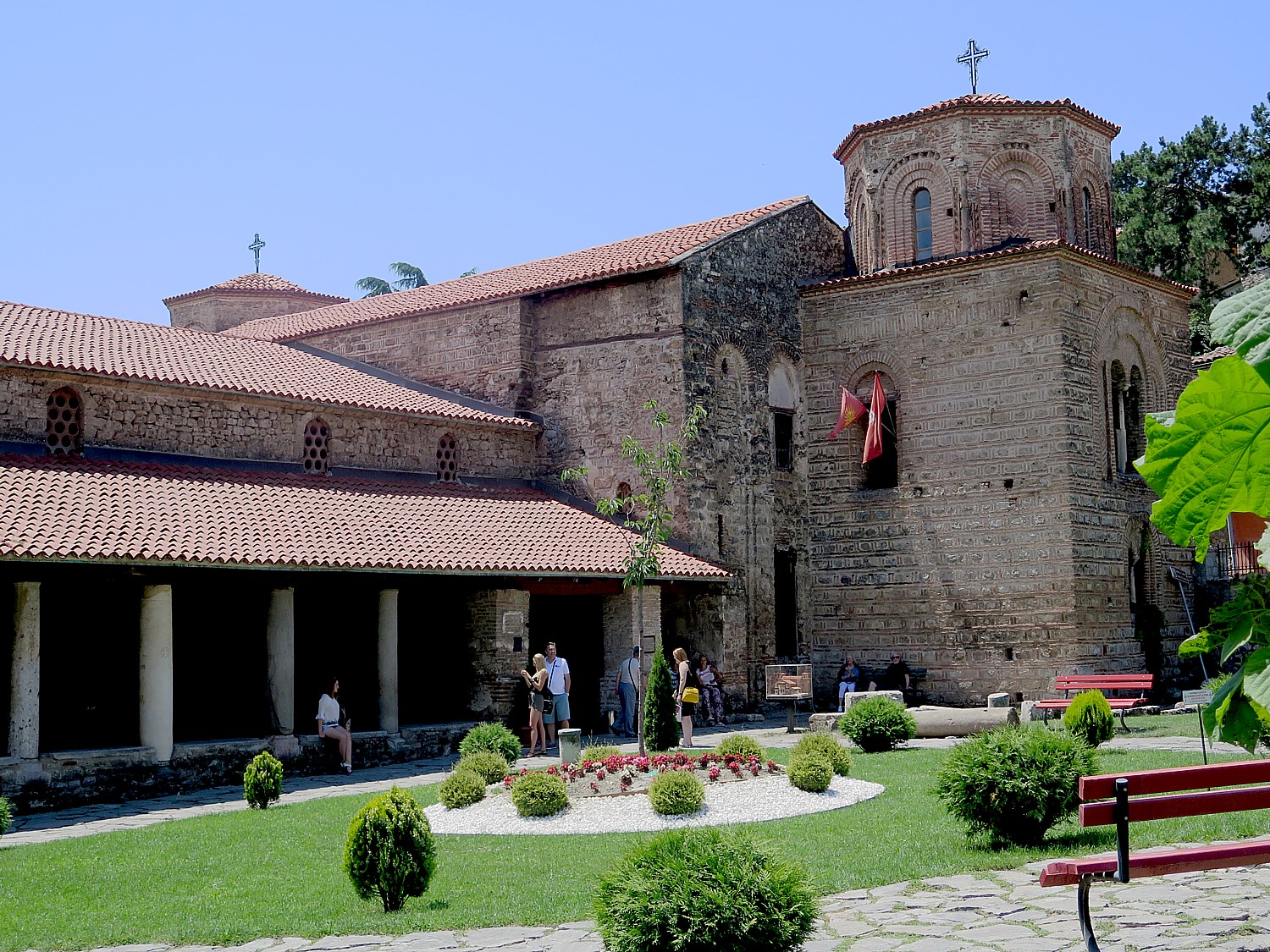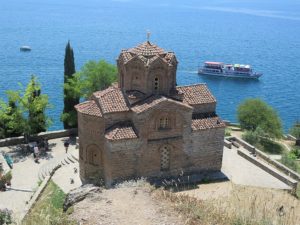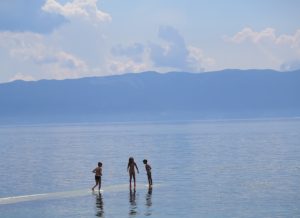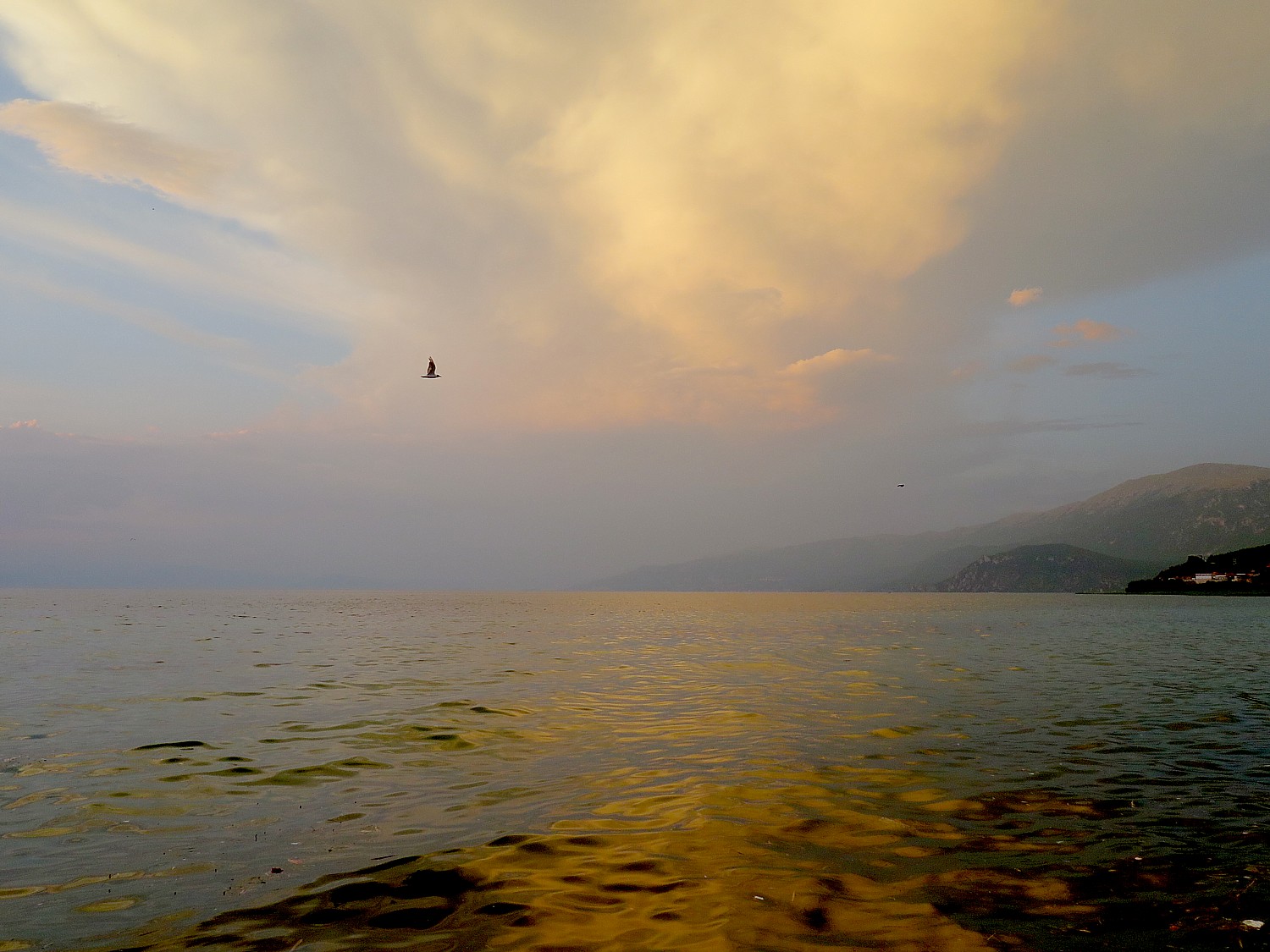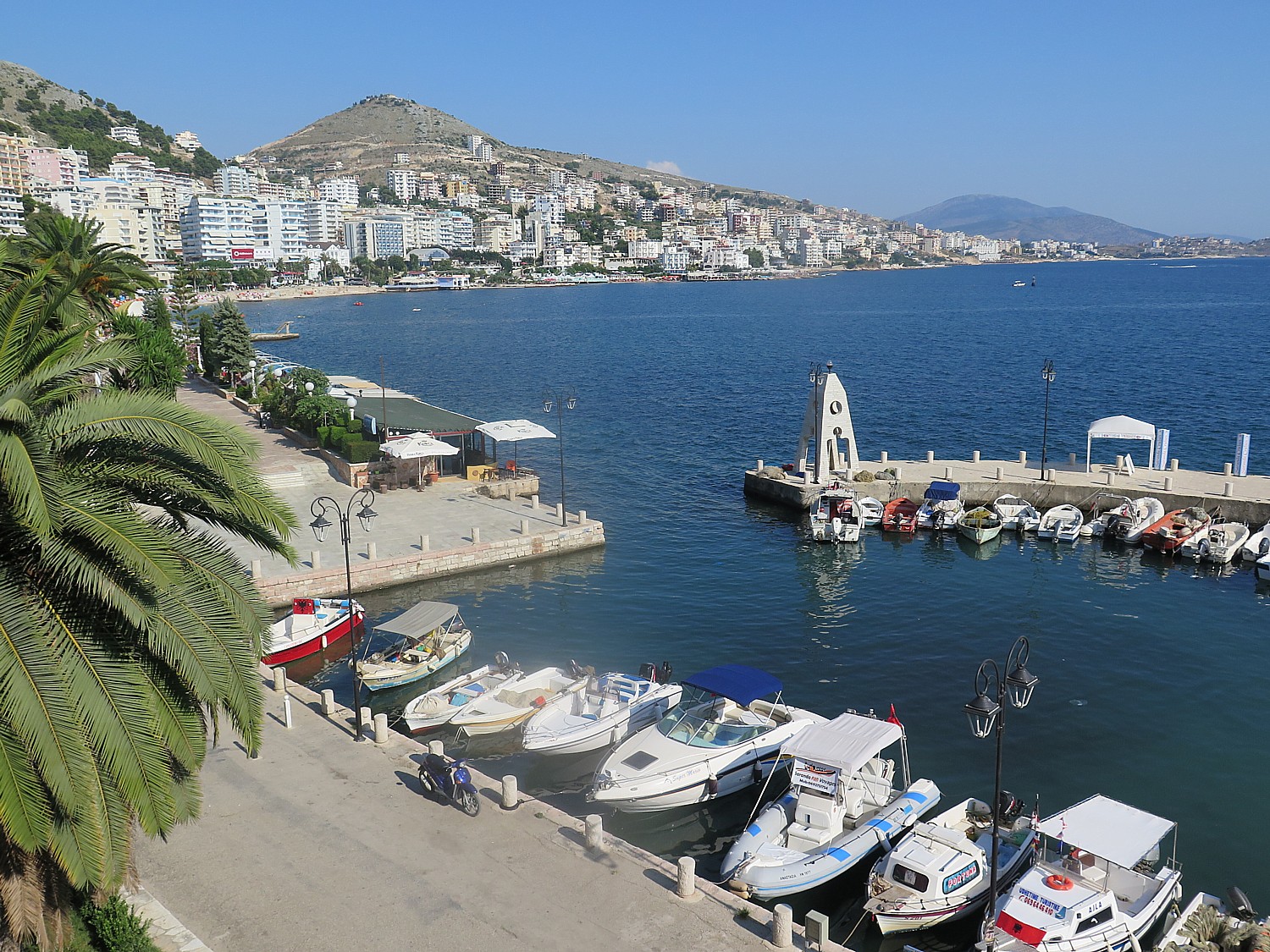
by Karen Rubin, goingplacesfarandnear.com
(I travel to Albania with BikeTours.com’s President Jim Johnson on a specially constructed “President’s Tour” itinerary that modifies the regular “Albania’s UNESCO Sites with Rivers, Valleys, and Gorges” trip. (See: Come to Albania Now to See Emergence of a Young Country-Best Way to Experience Albania is on Bike Tour. This is 7th in the series.)
After our tour of the National Park of Butrint, the extraordinary archaeological site that lets us travel through five époques of civilization, from the Hellenic to Roman, to Ottoman to Venetian, we continue riding our bikes into Saranda, one of the most popular beach towns along Albania’s Riviera, the end of a 70 km ride.
Draped along a curving bay with a narrow strip of beach, Saranda immediately reminds me of some of the smaller, non-posh beach towns of the French Riviera. Riding in, there are any number of new-built apartment houses, many not yet finished (housing bubble, anybody?). We ride down to the beach level where lovely hotels abound, and there is a gorgeous promenade.
Our bike tour turns into a beach holiday, and we get to see a different side of Albania – Albanians at play.
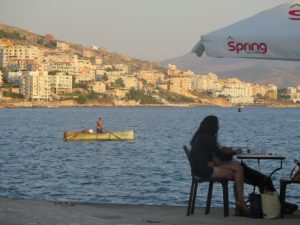
Saranda immediately reminds me of some of the smaller, non-posh beach towns of the French Riviera. Riding in, there are any number of new-built apartment houses, many not yet finished (housing bubble, anybody?). We ride down to the beach level where lovely hotels abound, and there is a gorgeous promenade.
Saranda, formerly known as Porto Edda, named after Mussolini’s daughter, has emerged as a major beach resort on the Ionian Sea, just opposite the Greek island of to Corfu (we watch major cruise ships sailing in the distance toward Corfu). Indeed, it has that cosmopolitan flare we found in Korca, owing to the fact many foreign day-trippers come by ferry from Corfu. There is a very festive atmosphere – and didn’t exist during the Communist reign. Indeed, most of its buildings are post-1990.
Still, Albanian most southern coastal city, only recently accessible, remains unpretentious.

I get the idea that this would be a great place for some Americans looking for an inexpensive place to retire where there is a very pleasant, relaxed, welcoming atmosphere (like in “Best Exotic Marigold Hotel”). It is cheap to live here, where I calculate living costs at about one-fourth to one-fifth of what we expect to pay in the US, and where the median annual income is $5000 (though Albania’s medical infrastructure gets mixed reviews).
Our bike tour turns into a beach holiday, and we get to see a different side of Albania – Albanians at play.
I drop my stuff at our hotel, a very pleasant place which is directly above this marvelous promenade with gorgeous views from my balcony to the beachfront and marina, and go for a swim.
Instead of soft white sand, though, the beach is made of pebbles (bring water shoes, not just flip flops).
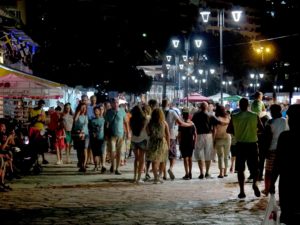
Strolling along the promenade after dinner, I mix in with the crowds of people – couples holding hands, groups of friends, families with young children excitedly leaning up to an ice cream stand. There is a gay, carefree spirit.
This could be Coney Island, Brighton Beach, Long Beach, Jones Beach.
Across the water there is a loud dance place, with bright lights flashing; they shoot off fireworks.
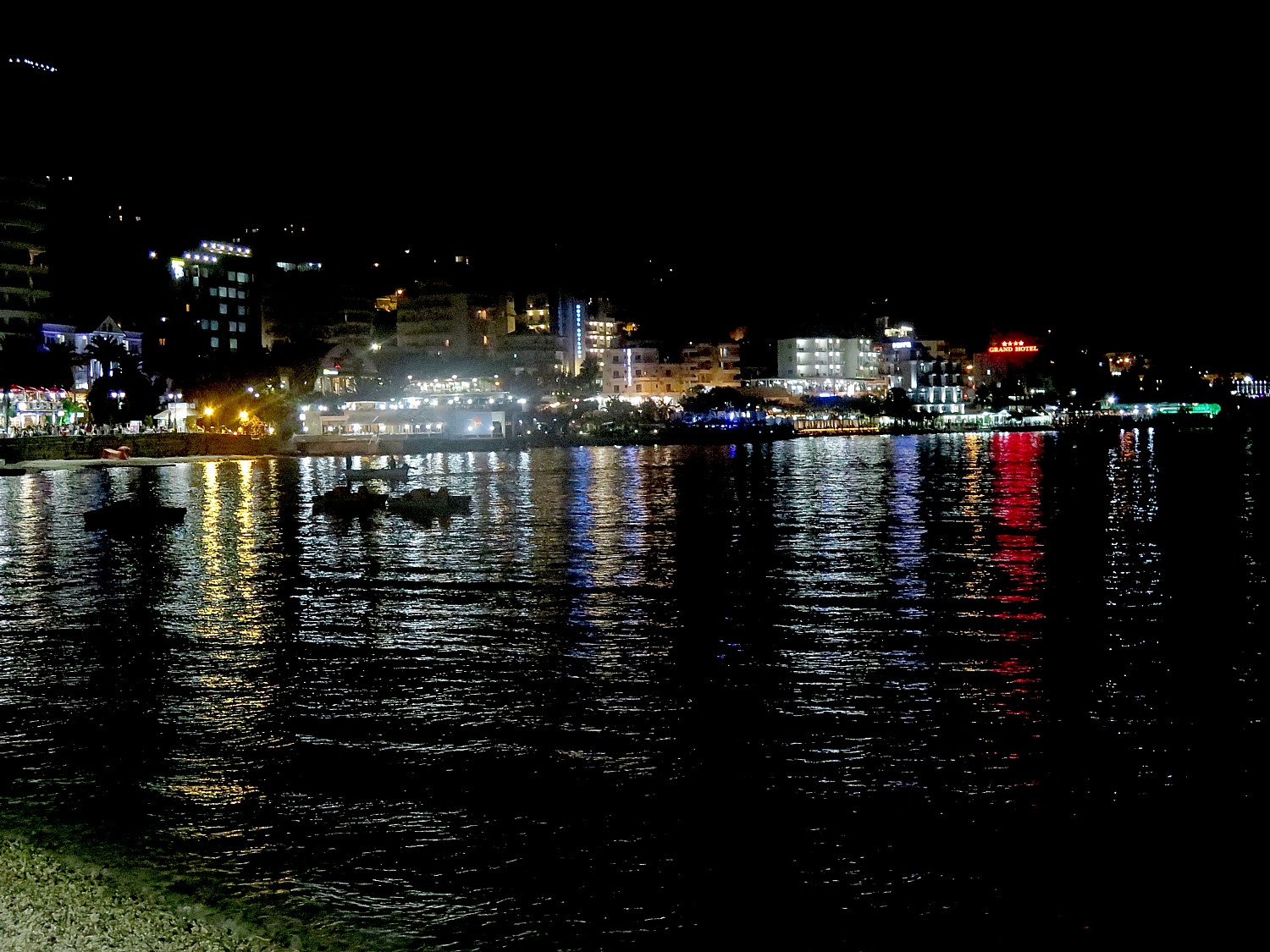
(I subsequently learn that just before we arrived here, the city unveiled a bust to Secretary of State Hillary Clinton, but I did not know to look for it.)
(More info at www.visitsaranda.com)
Day 8 Cycling: Himare
Today’s ride, the last of the cycling portion of our specially arranged President’s tour of Albania, is the most arduous and challenging, with a total elevation gain of 1064 meters (and an equal drop), over a distance of 54 km.

We cycle up out of Saranda, along the Albanian Riviera heading north toward Himare, a small Communist-era fishing village. We have mountains to the right and coastal views to the left before descending to the long beach and bay of Potam where we get to swim in the brilliant aquamarine waters of the Ionian Sea, just across the street from our hotel.
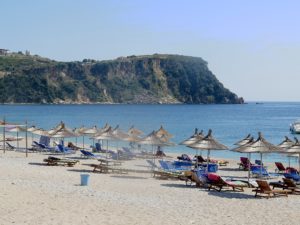
This ends the biking portion of our trip and I am frankly sad to see our bikes (especially my e-bike, which I have become very attached to) being hauled off in the van by Bato, our wonderful driver. The next two days, we will be traveling by kayak – another special feature of this specially tailored Presidents’ tour.
Seeing the coastline from the kayak is stunning – the blue-to-aquamarine-to-emerald colored water, so clear when you look down; the rocky cliffs that drop straight into the water.
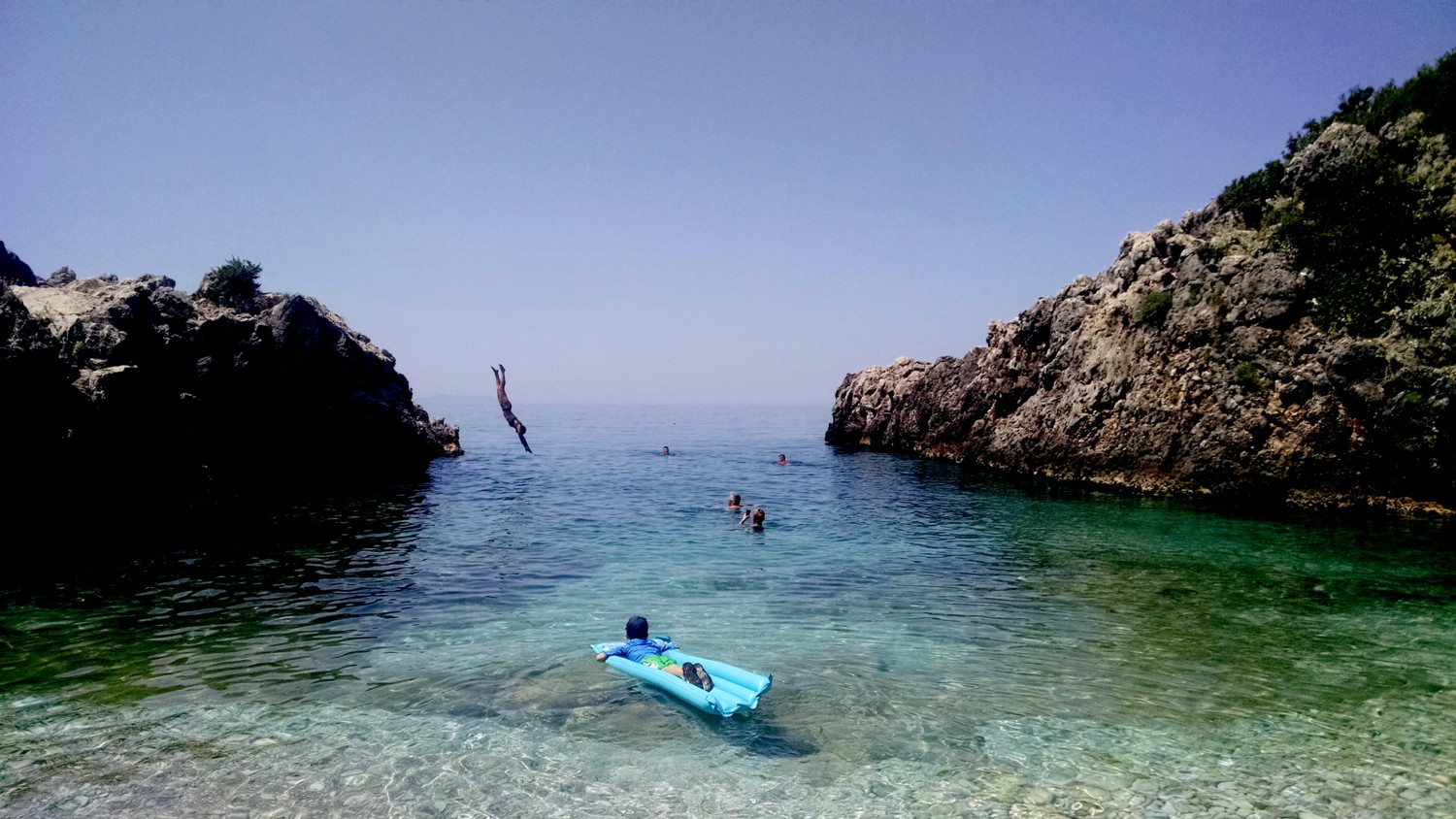
We paddle about 6 km, pulling into secluded beaches and coves, and get to peak into a couple of small caves. There are any number of these beaches where there are but a handful of people, some of whom are camping out.
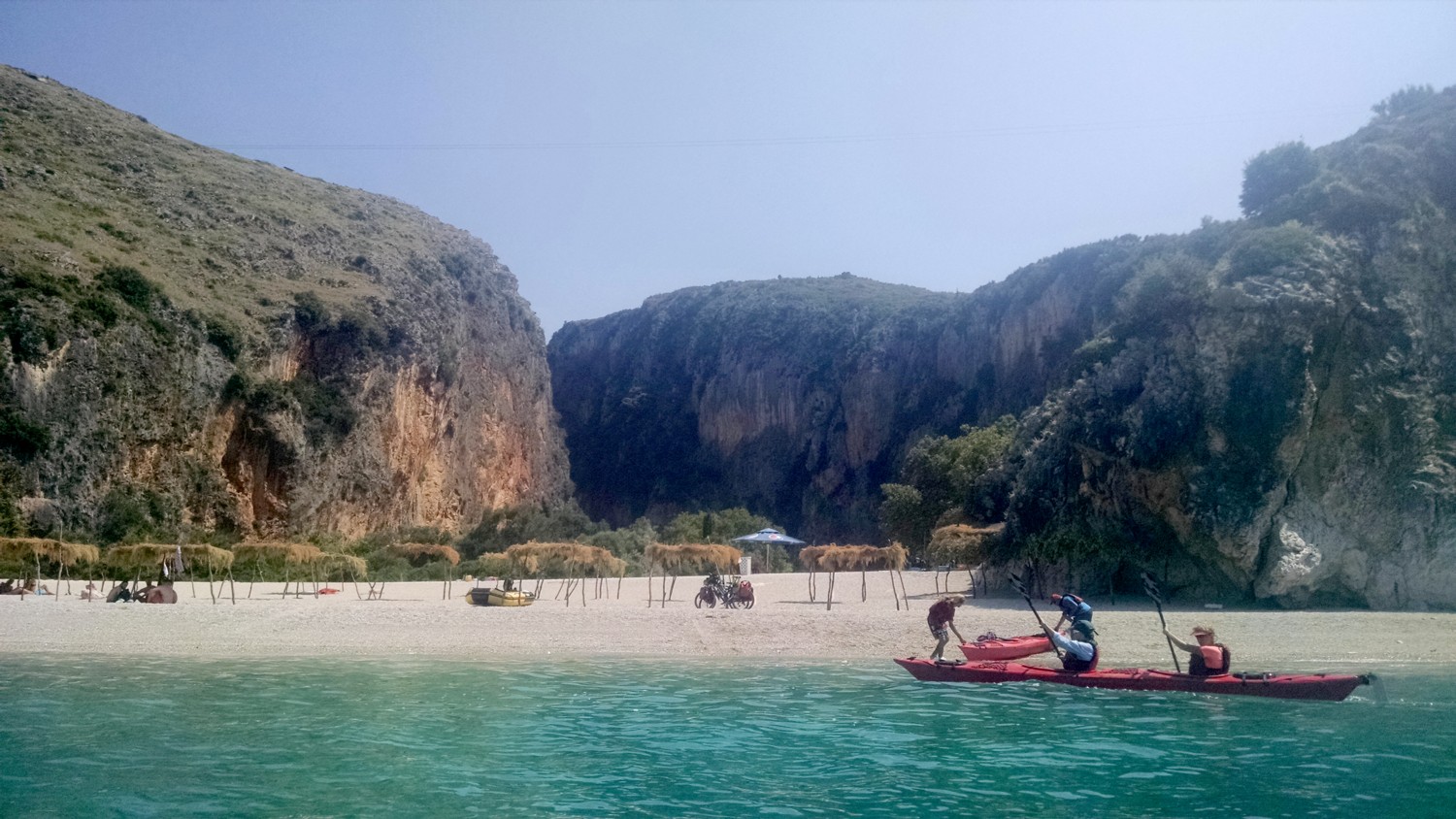
One of the beaches near Himare (also spelled Dhimare), in particular, has a canyon for a backdrop of exquisite beauty.
It is tremendous fun to arrive into the place where you will be staying by kayak.
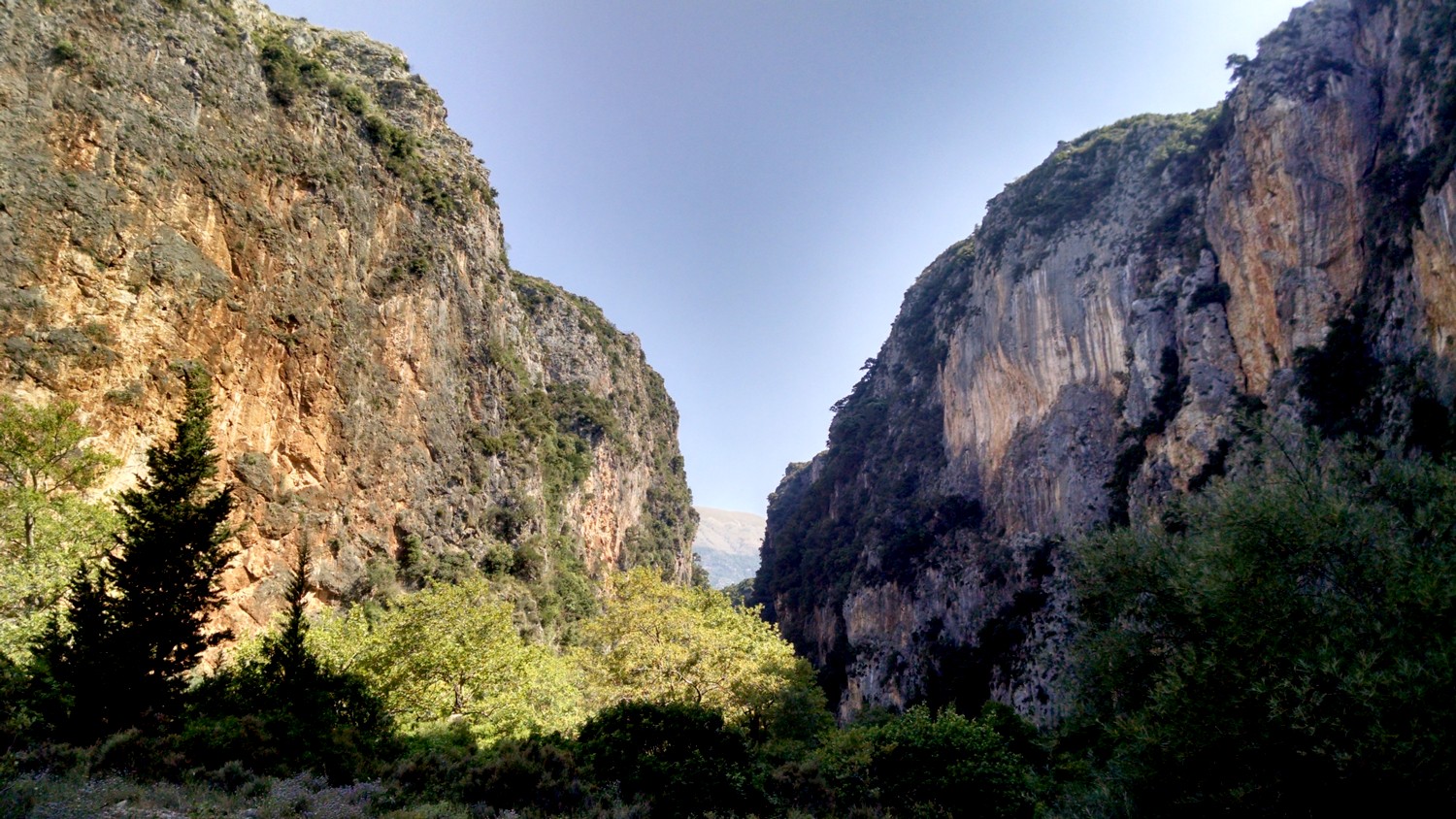
Our last two days are spent in Dhermi – a small village that is considered Albania’s #1 beach town – providing us with an unexpected time to just relax and stay put.

This is like the Riviera without any of the pretension. Lounge chairs and umbrellas are neatly laid out; a waiter comes to take drink orders; the roadway (sometimes asphalt, sometimes cobblestone and sometimes dirt and rock) lined with hotels and restaurants.
Here we get more opportunity to hang out with ordinary Albanian families. I am struck to see how parents dote over their kids, how tender, attentive and adoring fathers are with their toddlers, how women are every bit on equal footing with the men, without any kind of self-consciousness. It just is. And how scant the bathing suits. So much for a Majority Muslim country.
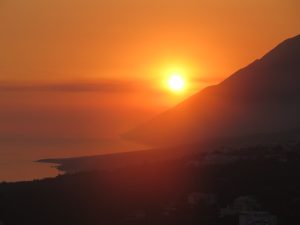
On our last evening, Junid, our guide, drives us up to the actual town, Dhermi,built into the hillside, where there is a delightful tavern that has an exquisite view of the sunset.
The next day, on our way back to Tirana, the capital city, where the Mother Theresa International Airport is located, he takes us up to an even higher promontory on the mountain pass, where we get to watch a paragliding club take off and soar down to the seacoast.

It is hard to imagine these scenes 35 years ago or even 20 years ago.
This is the new Albania, the young Albania. It is a very different place from even 10 years ago and one only can imagine what it will be like in 10 years time.
“It’s Europe’s best-kept—and maybe last—secret,” says Jim Johnson, president of BikeTours.com. Few foreigners have visited this mysterious country due to decades of Communist rule, dictatorship and isolationism. But since the country opened its borders in 1991, visitors have been awestruck by its untouched nature and rich culture and the overall uniqueness of this truly special place.
“Albania still remains undiscovered by mass tourism, setting it apart from other European destinations. In Rome, you’ll throng elbow to elbow with tourists vying for views of ancient ruins. In Albania, you’ll often have them all to yourself. In Butrint National Park, for example, our small group roamed nearly alone among acres of ruins dating from Greek, Roman, Byzantine, and medieval times. Even just to the north in Croatia, tourists clog the beaches. In Albania, we could dip our toes into turquoise waters along the pristine coastline with not another person in sight.
“Albania is the best place no one has been to yet,” he says. “See it now” before it comes on to travelers’ radar.
Bike Touring: Best Way to Travel
I’ve been touring Albania for just two weeks – before it was a complete unknown to me, and I expect most Americans. But I believe that I have really come to know the country, its culture and its people and that’s mainly because of the way we travel: by bike.
Bike touring is the best way to engage, to really discover a destination even in a short period of time. Cars and tour buses would never come to these back country roads, roads that have been bypassed by more recently constructed highways; they would never come through these villages and neighborhoods as we have. They would go too fast to get any sense at all of moments that, on a bike, you can snatch up and savor, and looking through glass windows puts a layer of unreality.
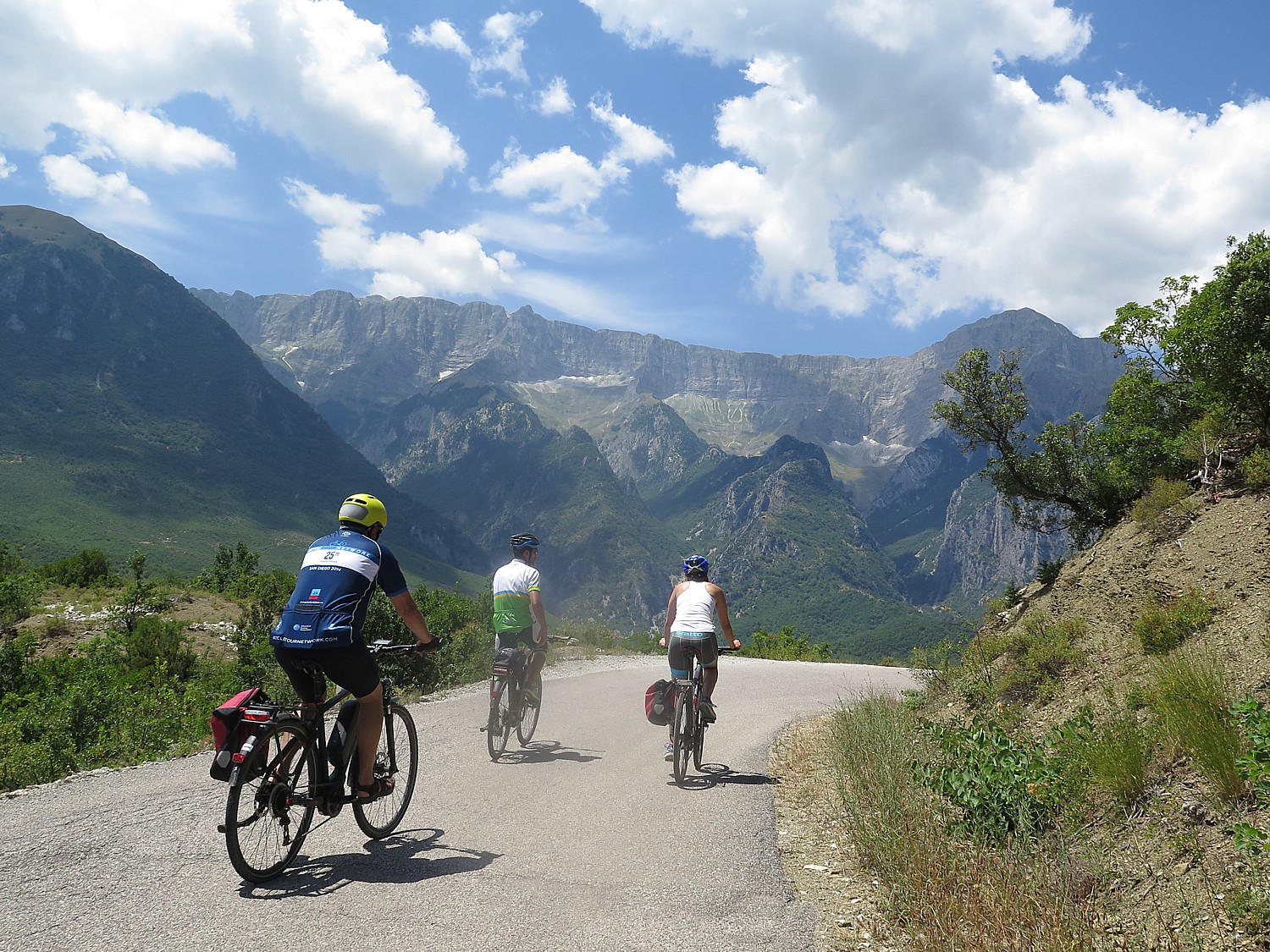
I have found, over a lifetime of travel, that bike touring is my favorite style of traveling. The pace is perfect to really see things – I really like the physical aspect (as opposed to sitting in a car or bus to get point-to-point), with the ability to stop and really look around, have a conversation with a local person, take a photo. The word “authentic” has been bandied about, but bike touring affords one of the more “authentic” travel experiences. Typically, the routes go into villages, through neighborhoods, and along country roads that would not typically be traveled by a tour bus.
And now, with the availability of e-bikes (which are not scooters, but basically provide an electronic boost to your pedaling), especially in hilly destinations, you really don’t have to worry about being able to manage the distance or climbing the hills.
Exercising your body (biking versus sitting in a car or bus) also gets your brain working, and you find yourselves really thinking about what you are seeing, really absorbing.
And what you feel at the end of the trip is a combination of exhilaration, satisfaction and personal growth.
BikeTours.com President Jim Johnson, who is leading this special “President’s Tour” of Albania (and who is providing some counsel to USAID on how to develop sustainable tourism, like bike trips), says that too many people have a misconception of what bike tours are about.
“They think they will be biking 100 miles in a day.” In fact, the distances each day were more in the range of 25-50 miles, depending upon the difficulty, and are broken up with coffee stops and lunch.
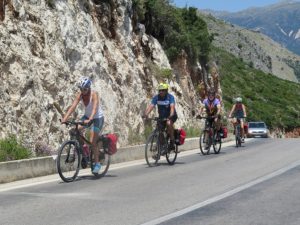
More significantly, the bike tour itinerary is constructed so that the distances are manageable (there are classes of guided bike-tours which indicate the difficulty), and the emphasis is on enjoying and appreciating the destination, as opposed to racing or training for the Olympics. The day’s rides are designed to feature the best scenery and sites. And each day, we finish biking early in the afternoon and have time for sightseeing, or visit sites along the way, still arriving early in the afternoon at our destination. (Admissions are typically included and the visits are guided.)
Also people assume that on a guided tour, they will have to ride in a pack. In fact, we ride at our own pace.

Also, even though this is a guided group trip, we ride at our own pace – the guide or the group typically will take a water break to allow the slower rider (me) catch up, and there will always be someone to wait for the following rider if there is a turn. When there are larger groups, there is typically a guide at the front and at the back. (Once I inexplicably wound up as the lead rider and came to a fork in the road, and was just consulting my map when I hear shouts to tell me I was on the wrong side of the fork.).
In the Greek Isles on Biketours.com’s bike/boat trip, when we had a dozen in our group, there was a guide leading and another following; here in Albania, with only five riders, we had a guide and are followed by a van (Bato keeps a distance so we barely notice him) – and if any of us would have felt we couldn’t finish a climb, could have just hopped in.
The rides are supported – the van carries our luggage (that is a key difference with traveling on your own) as well as a supply of water.
There are variations on bike tours.
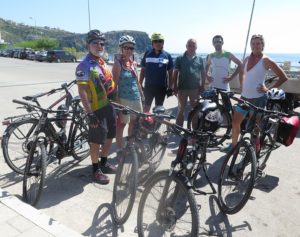
Guided bike tours are a terrific advantage, especially if you are traveling on your own – you get to join a group. But you also have the benefit of a guide to lead, who knows the territory, speaks the language, has mapped the best route both for riding as well as sights), and can explain things. Equally important, there is the benefit of the support van that carries luggage and is available in case someone feels they can’t climb the hill. You have the benefit of arranged coffee stops, lunch places, quaint accommodations, admissions to sites and attractions. On your own, you would need massive amounts of time to research the route, find lodging, not know the quality of the road or how long it would take to get to the destination.
Self-guided trips: Apart from guided tours (as the Albania trip and the boat/bike tour of the Greek Isles), there are self-guided trips, where you travel on your own, say with a friend or family or your own small group (which I did on the Danube Bike Trail with my two adult sons). But you still have the benefit of a mapped-out route (you can do at your own pace and pleasure), the maps with the route, itinerary, the bike rentals, and vouchers for the pre-arranged accommodations. You can choose your style of accommodation, from modest inns to luxury hotels (if available). The ride is supported – they pick up your luggage and deliver it to the next inn, which is a tremendous advantage. And there would be help available if you needed it along the way.
In both cases, you benefit from the expertise of the local tour operators, as well as their buying power to book accommodations at favorable rates.
BikeTours.com is basically a broker that has cataloged the best tours operated by local companies. I have typically found the programs to provide excellent value for dollar. Their pre-trip preparation materials are excellent, and their logistical coordination (pick up at airport, transfers, for example) are really well done.
Beginning with next season’s brochure, the company is returning to its roots and concentrating its offerings on Europe, rather than the entire world.
The biketours.com website is really user-friendly, but if you have trouble deciding where you want to go, you can check out the Gold Star Tours, which is a compendium of the most popular (for different reasons), and the Founders Tour (which I took this year to Albania), which is specially done.
You can search the site based on destination, style of bike touring, or special interest: Categories include: Self-guided, Guided, Bike + boat, Budget-friendly, Flat + leisurely, E-bikes, Family-friendly, Challenging, Wine + cuisine.
The key advantage of working with BikeTours.com advisors is that they know the destinations and the biking programs and can give the kind of advice to make the best choices (based on interest, goals, ability) and prepare for the trip (everything from a superb packing list to organizing transfer, pre- and post-trip hotels).As BikeTours motto says, “Life begins at the end of your comfort zone.”
Go for it.
BikeTours.com 1-877-462-2423 or 423-756-8907, 1222 Tremont St., Suite 100, Chattanooga, TN 37405, biketours.com.
____________________
© 2016 Travel Features Syndicate, a division of Workstyles, Inc. All rights reserved. Visit goingplacesfarandnear.com and travelwritersmagazine.com/TravelFeaturesSyndicate/. Blogging at goingplacesnearandfar.wordpress.com and moralcompasstravel.info. Send comments or questions to FamTravLtr@aol.com. Tweet @TravelFeatures. ‘Like’ us at facebook.com/NewsPhotoFeatures

